SympGAN manual
SympGAN is an integrative symptom-gene association database connecting symptoms, genotypes, disease phenotypes and clinical drugs. It includes four types of terminologies (i.e., symptoms, genotypes, diseases and clinical drugs) and five types of associations (symptom-gene, disease-gene, symptom-drug, symptom-disease and drug-target associations).
Users can browse, search and download all the terminologies and their associations through the web interface. Please contact us by the following contact information if you have any questions.
1. Browse function
Users can browse the database via clicking the ‘Browse’ button on the homepage, and then access specific data through selecting on the drop down menu in the browse page. Once the users have clicked on a specific component, e.g. symptom, a summary table about all symptoms is displayed accordingly. Users can get the explanation of the column names in each browse table in the file format section of the download page. Moreover, users can go through the large datasets by using the pagination menu in the bottom right.
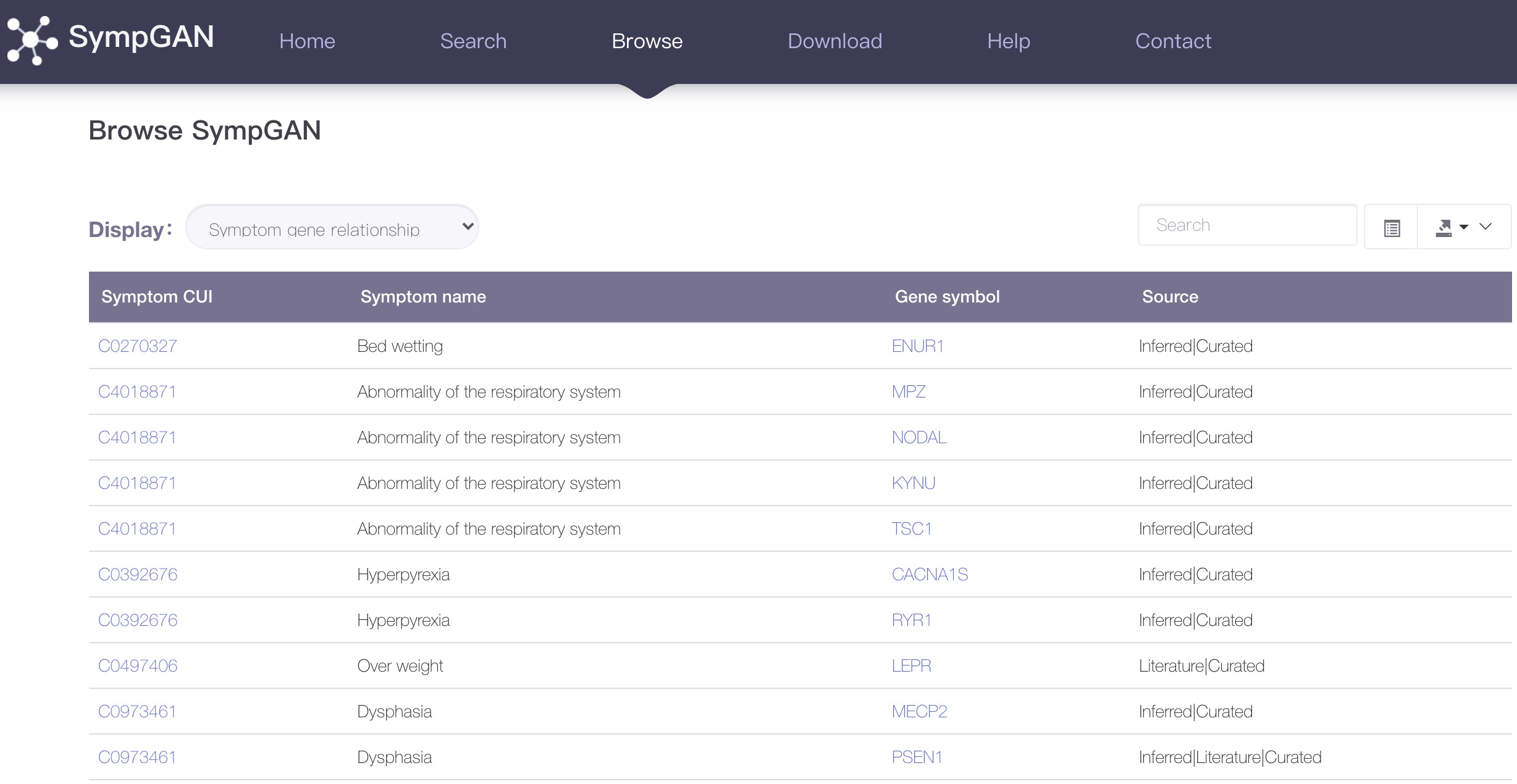
2. Search function
Users can click the ‘Search’ button on the homepage to search symptoms and diseases. SympGAN offers six search patterns. The first pattern is single symptom search that user can select a single symptom term as an input and obtain the detailed information of this symptom.
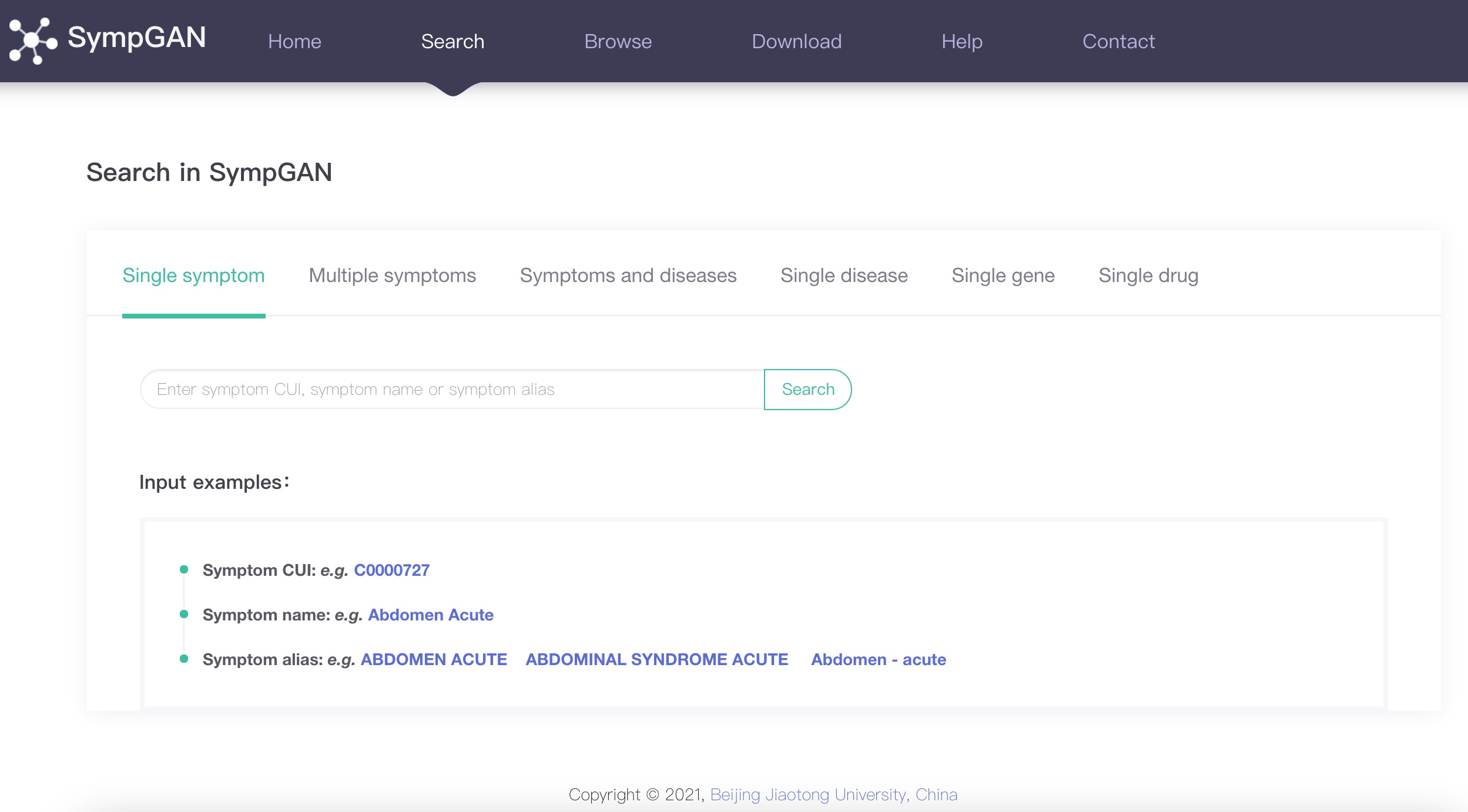
Users can fill in the term id (CUI offered by UMLS) or term name in the search box. The result page of search contains five sections, i.e., the basic information (i.e., symptom name, alias, definition and external links) of the input symptom, the related genes, the visualization of interaction network between the genes, the functional enrichment (i.e., Pathway and Gene Ontology) of genes, the related diseases and the related drugs that associates with the symptom.

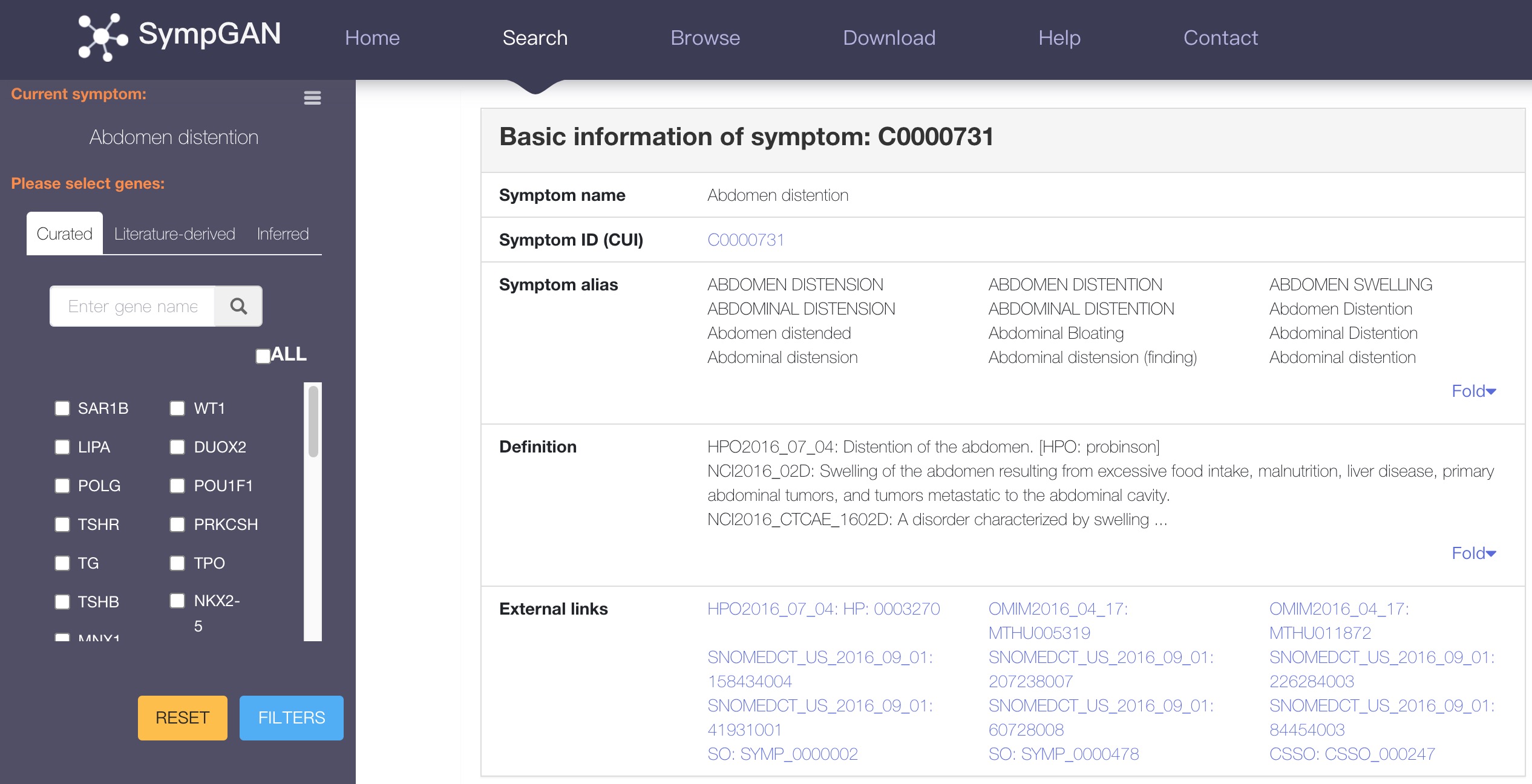
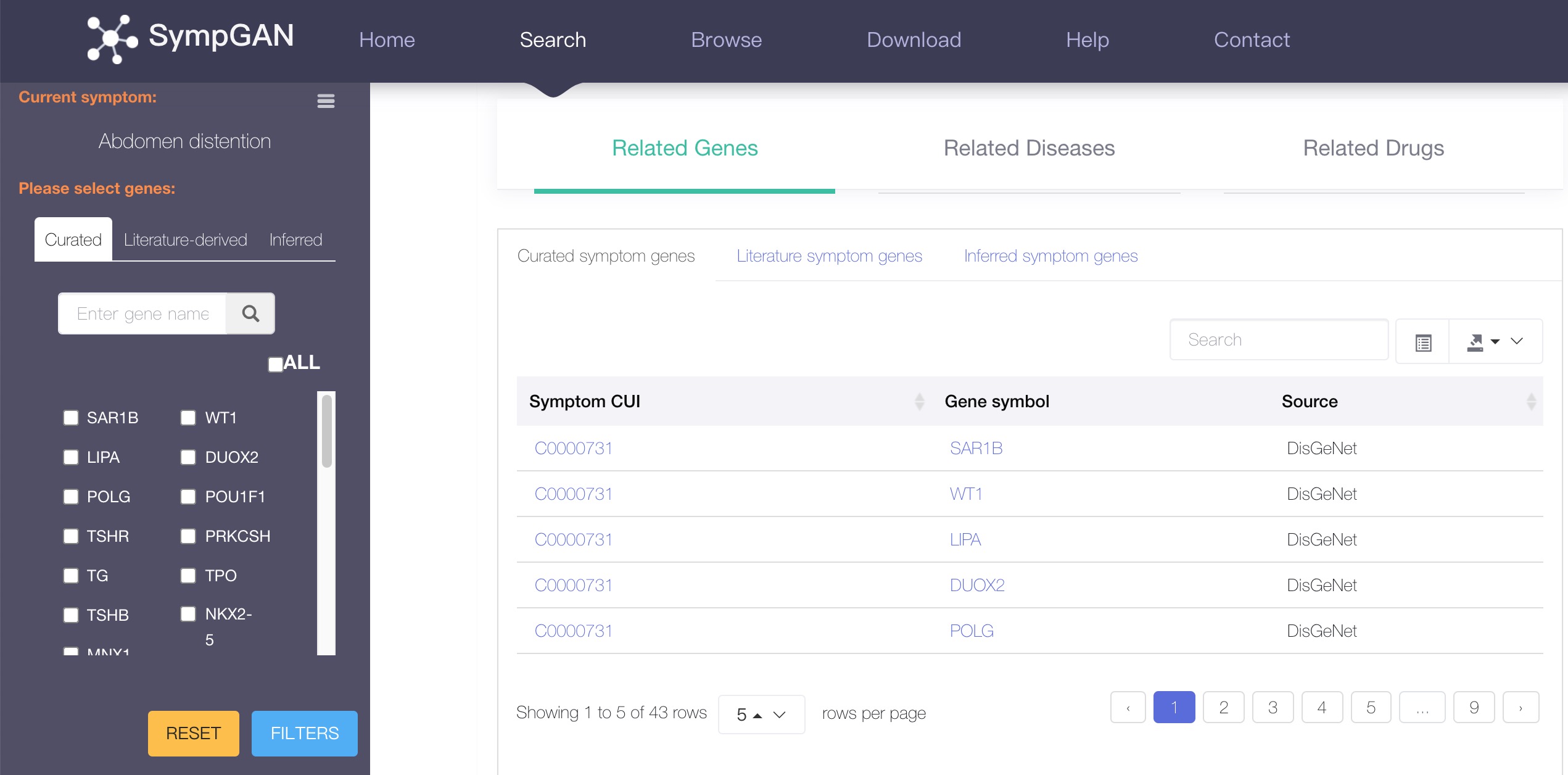
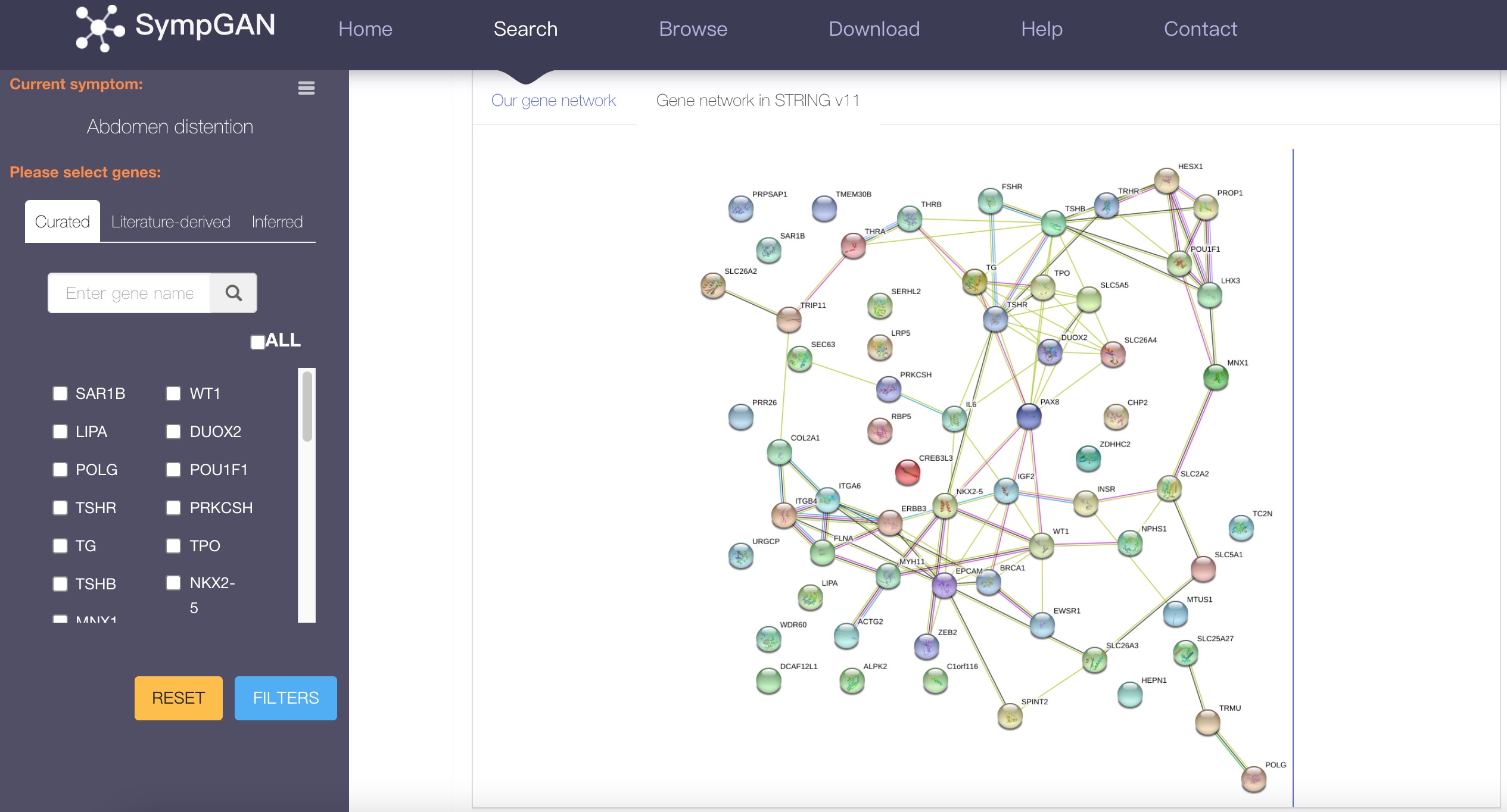
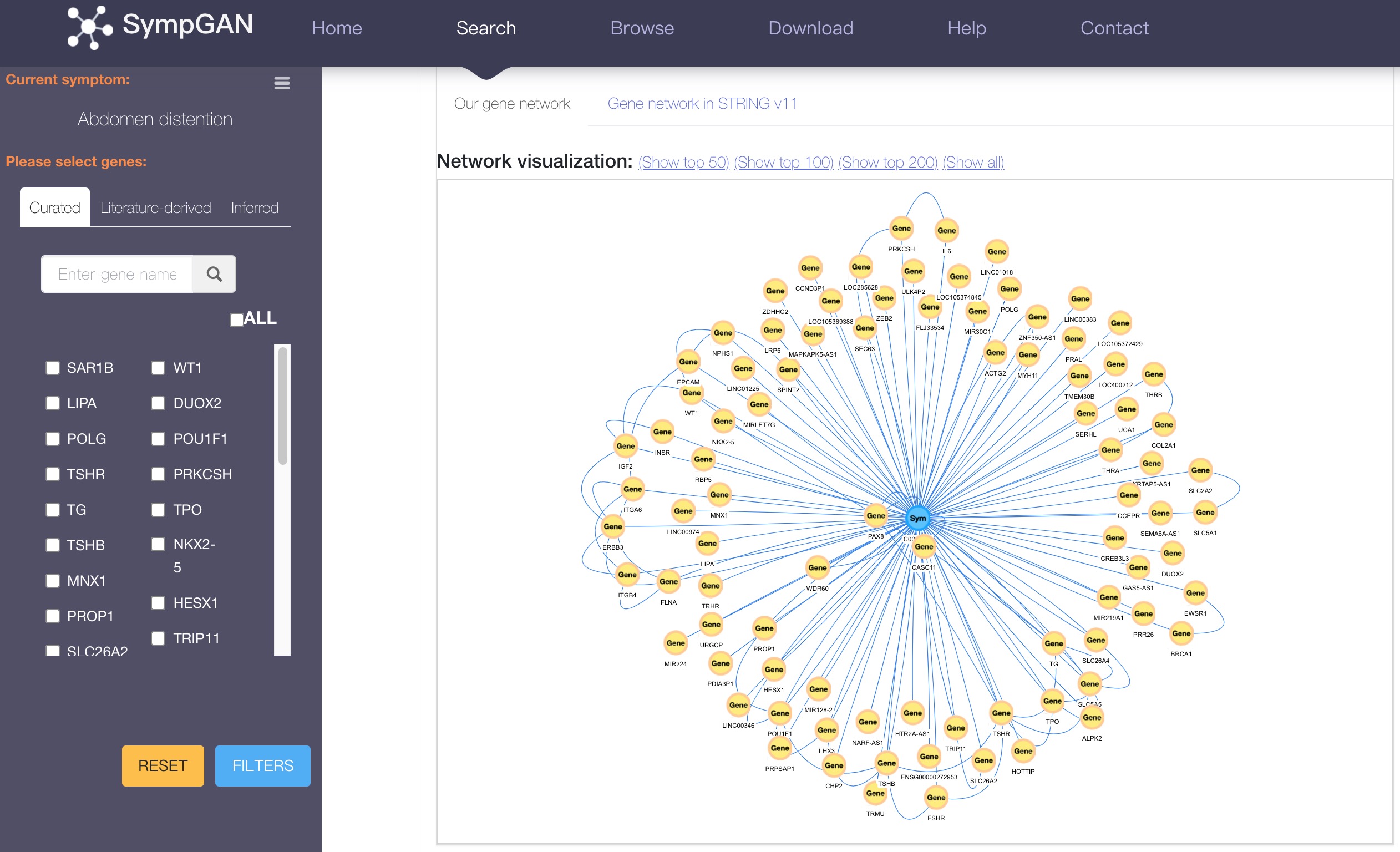
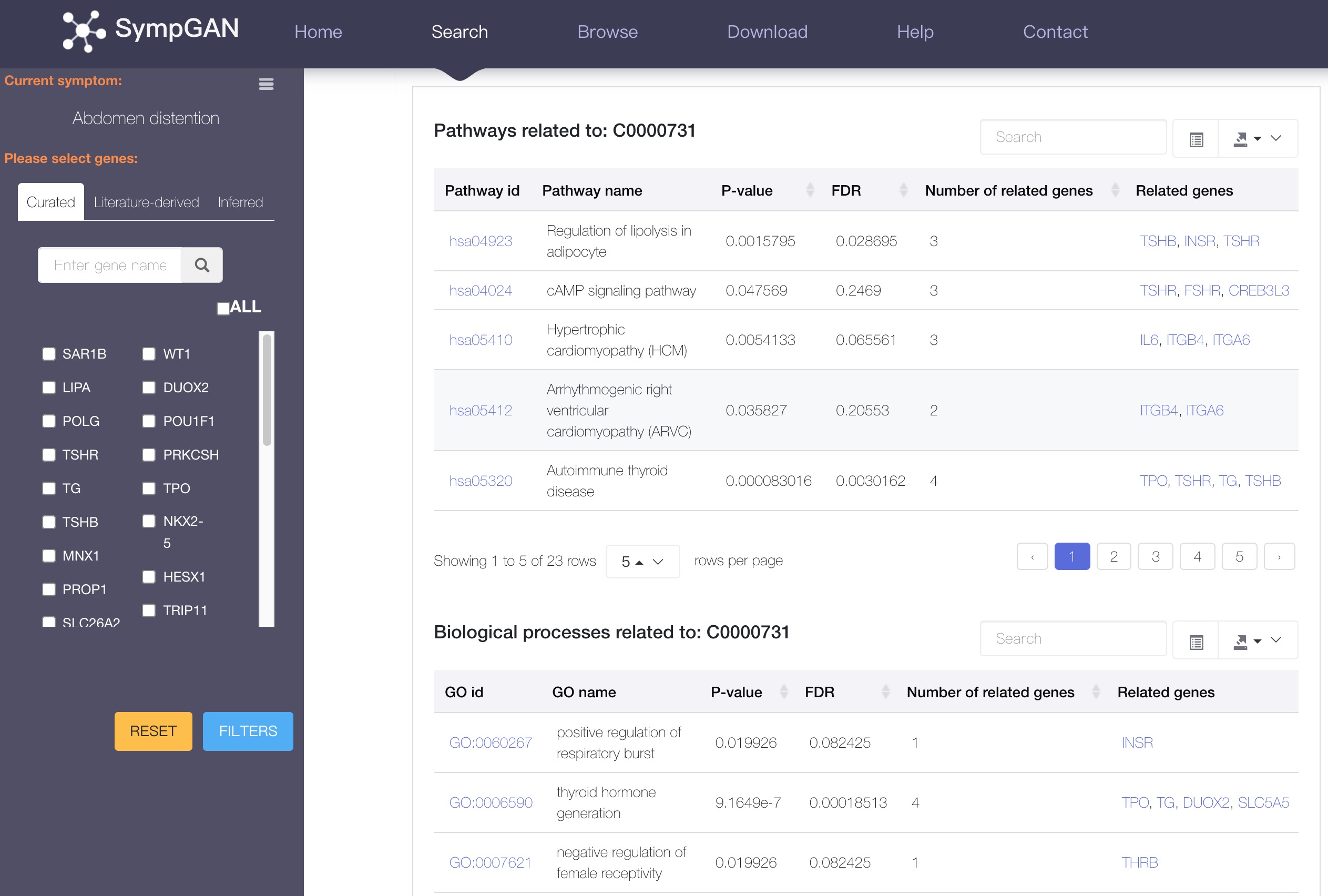
The second search pattern allows users to input multiplex symptoms (i.e., a symptom set) to investigate the molecular mechanism of them. The result page of search displays the related genes, the related diseases, and the related drugs of the symptom set.
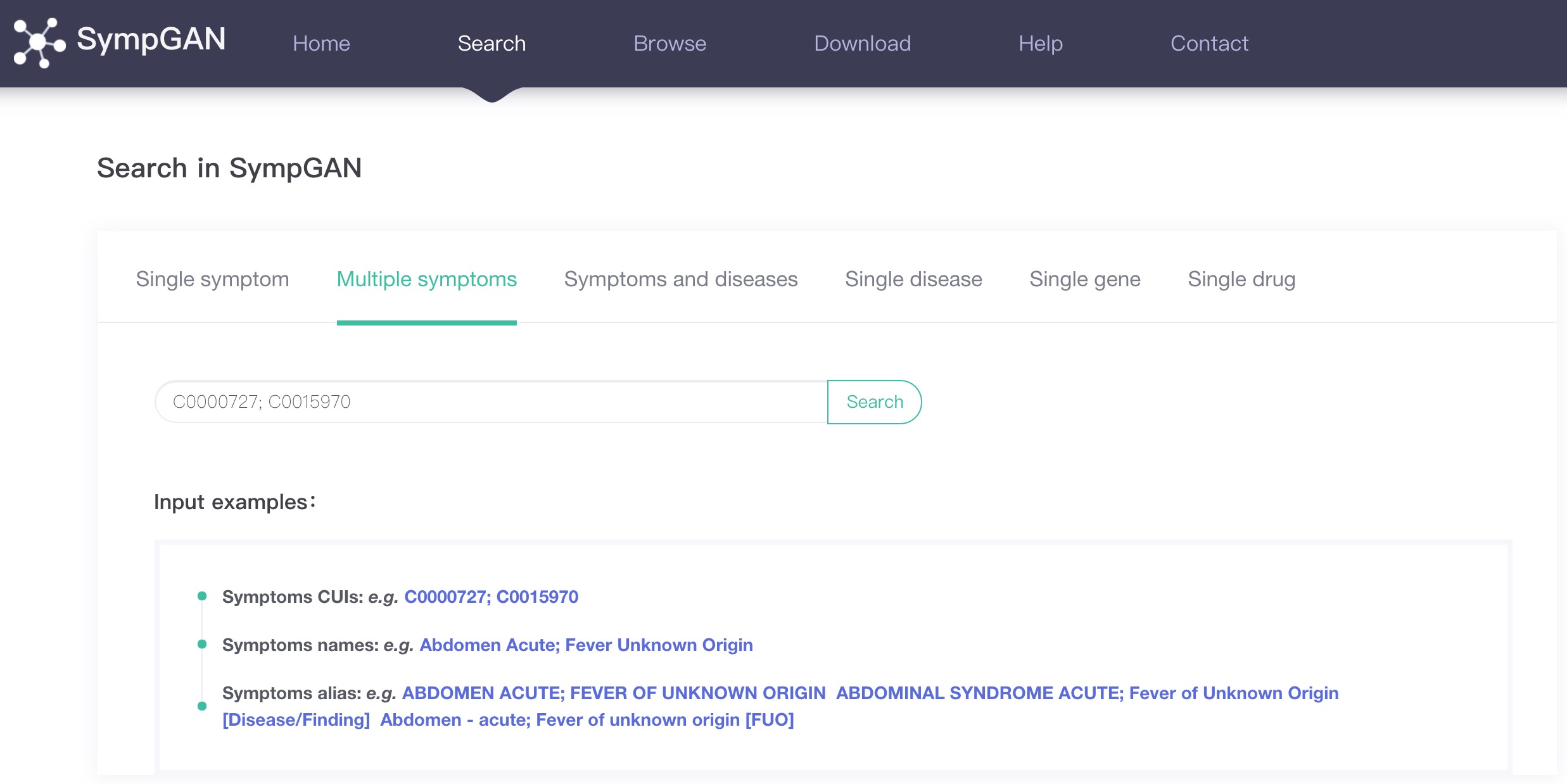
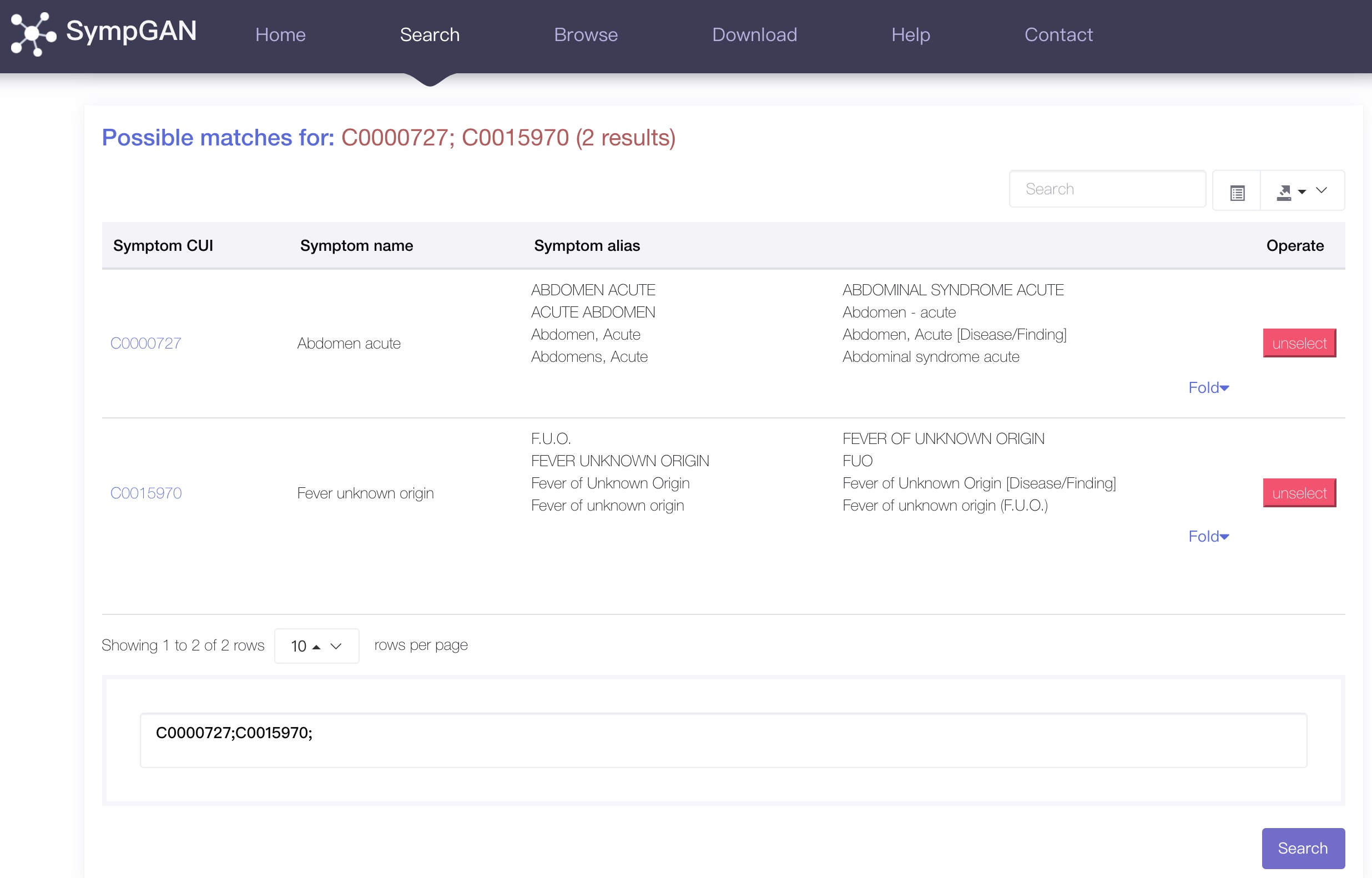
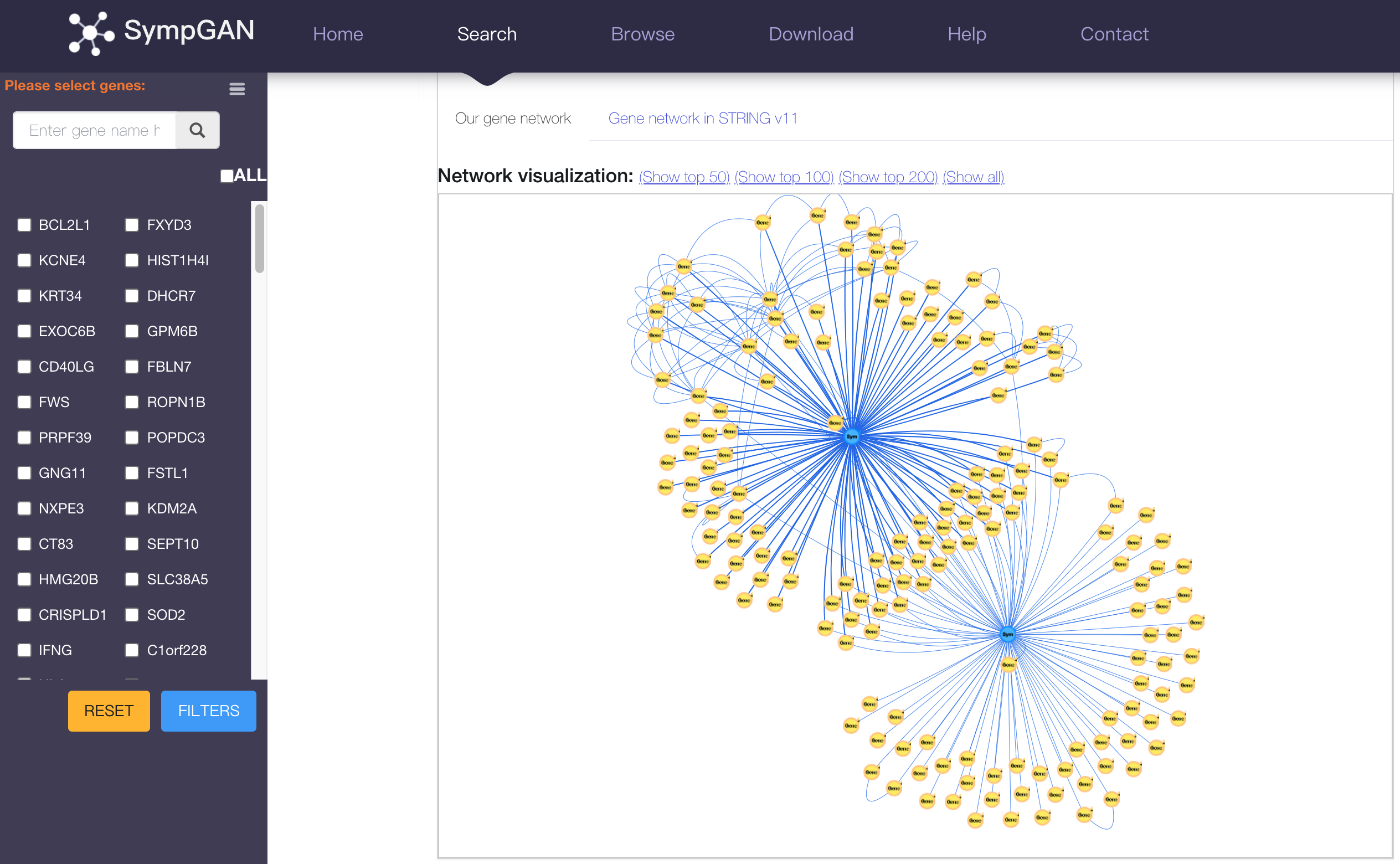
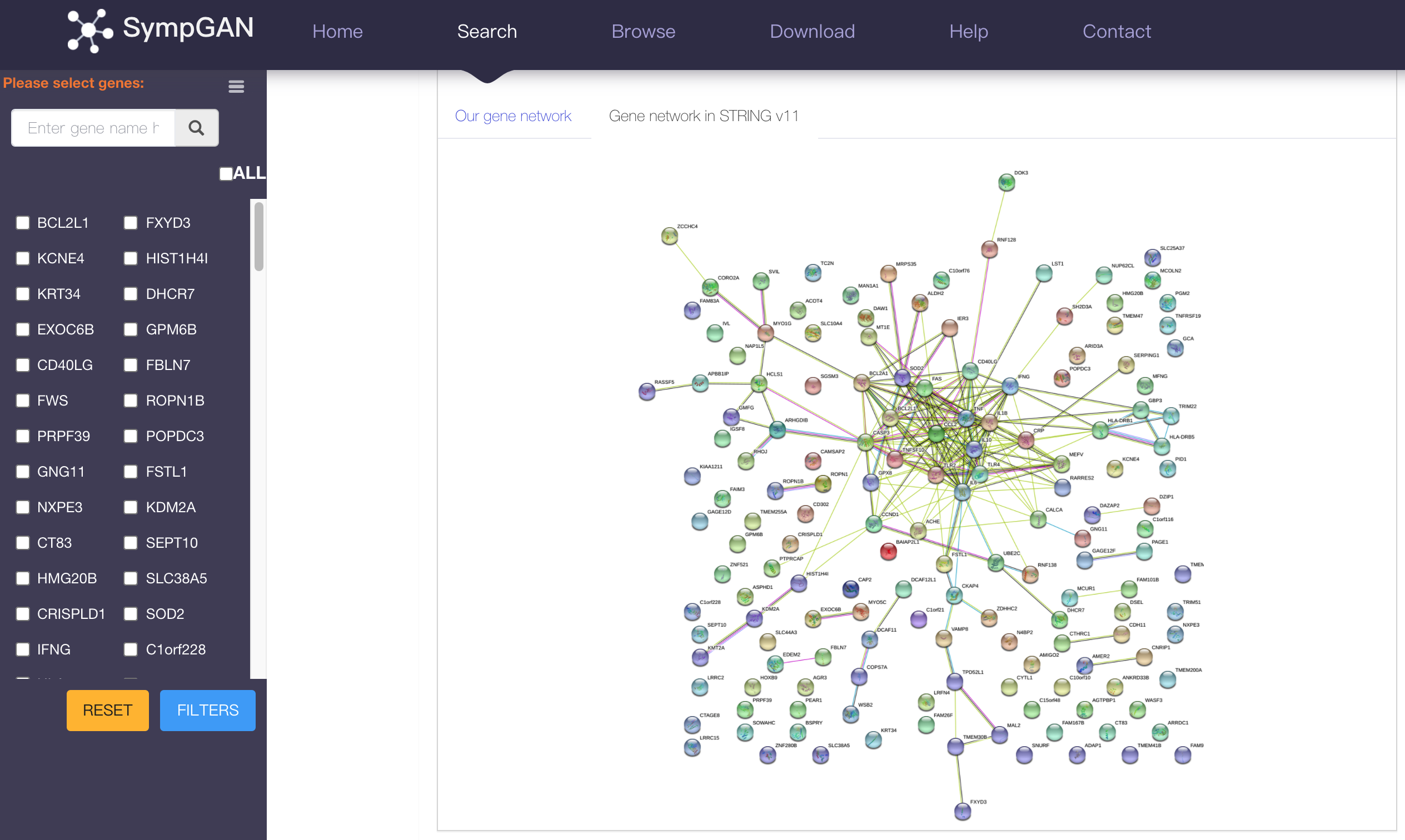
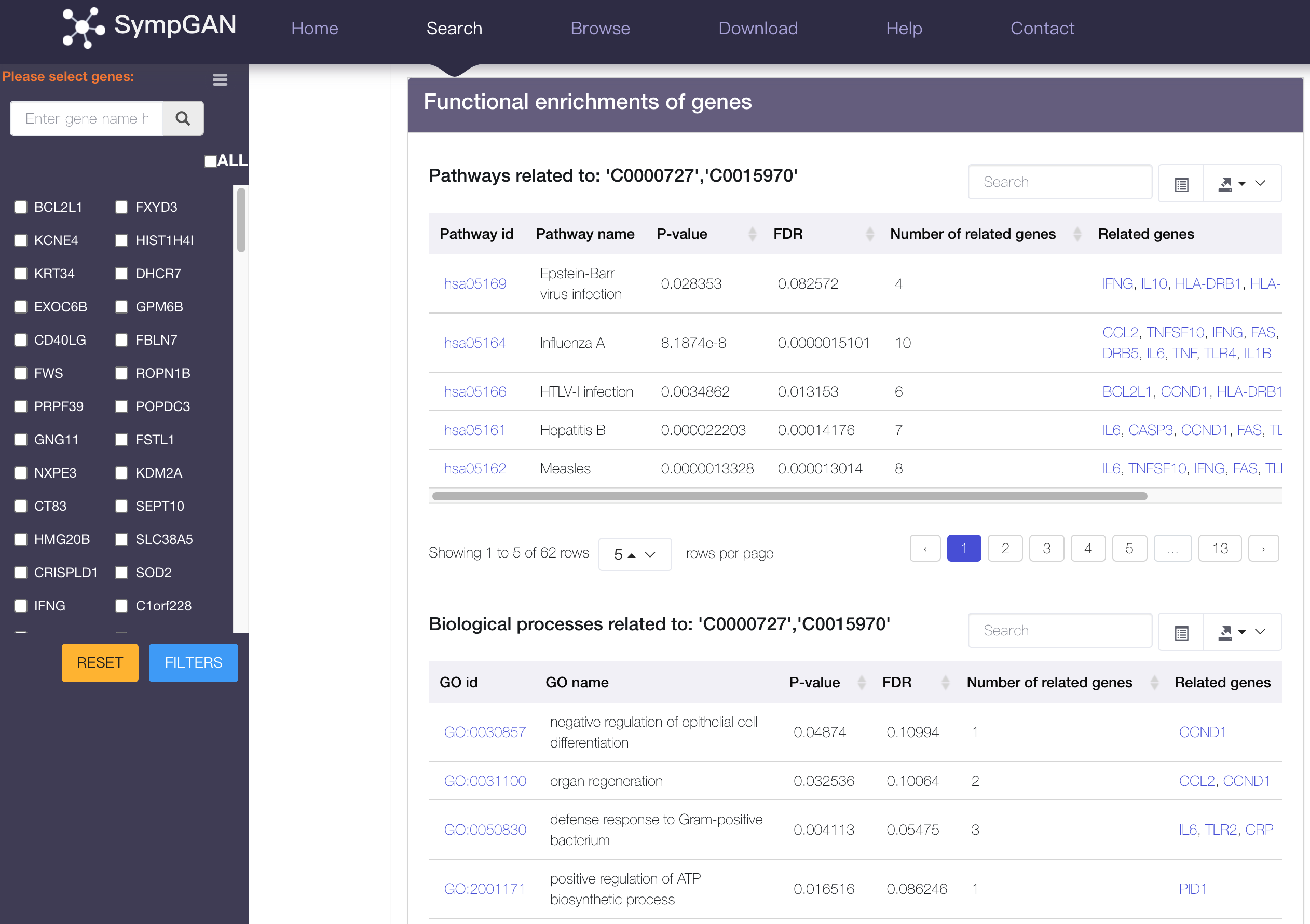
The third search pattern is combined search of diseases and symptoms, which can help user explore combined molecular functions of given multiplex diseases and symptoms.
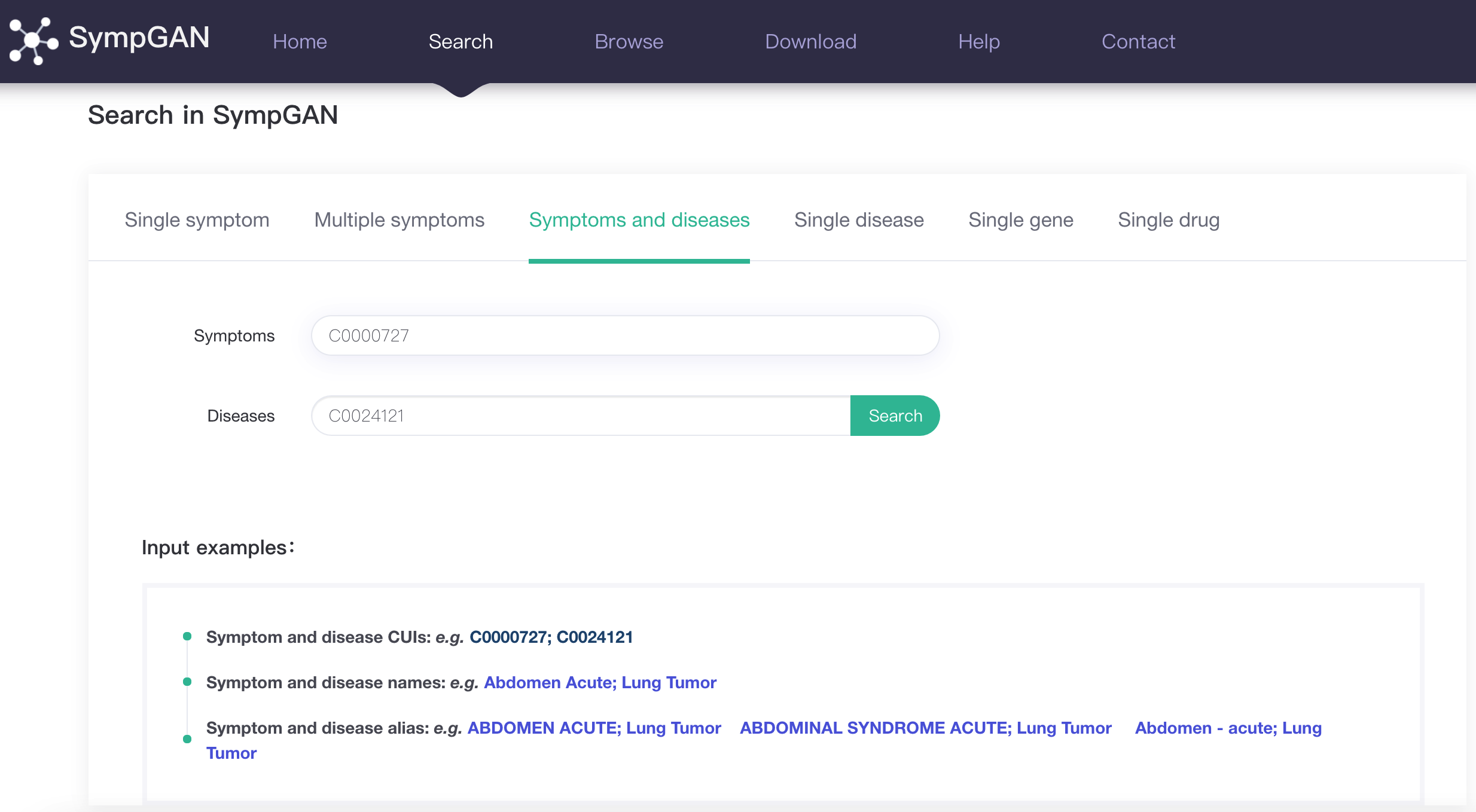
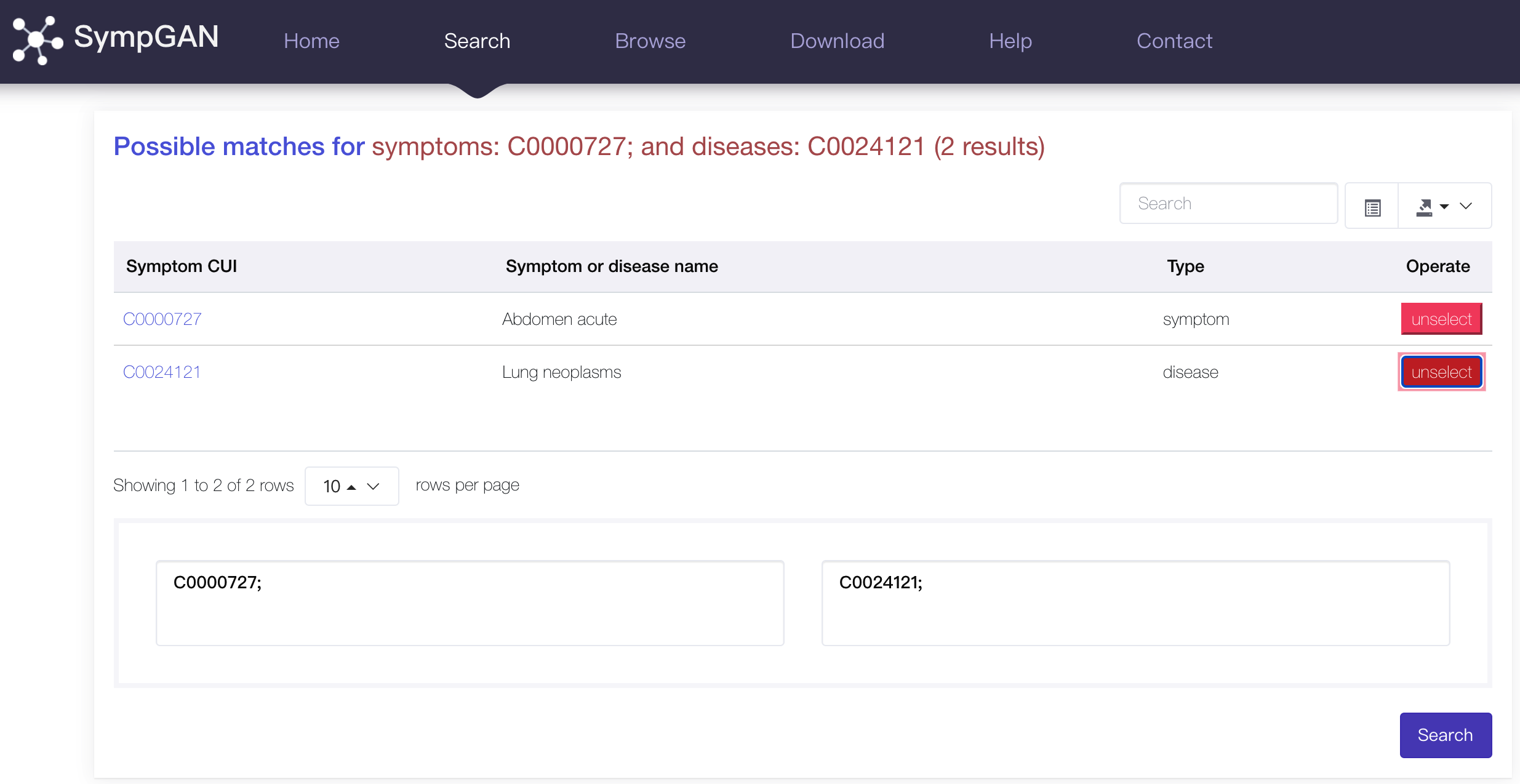
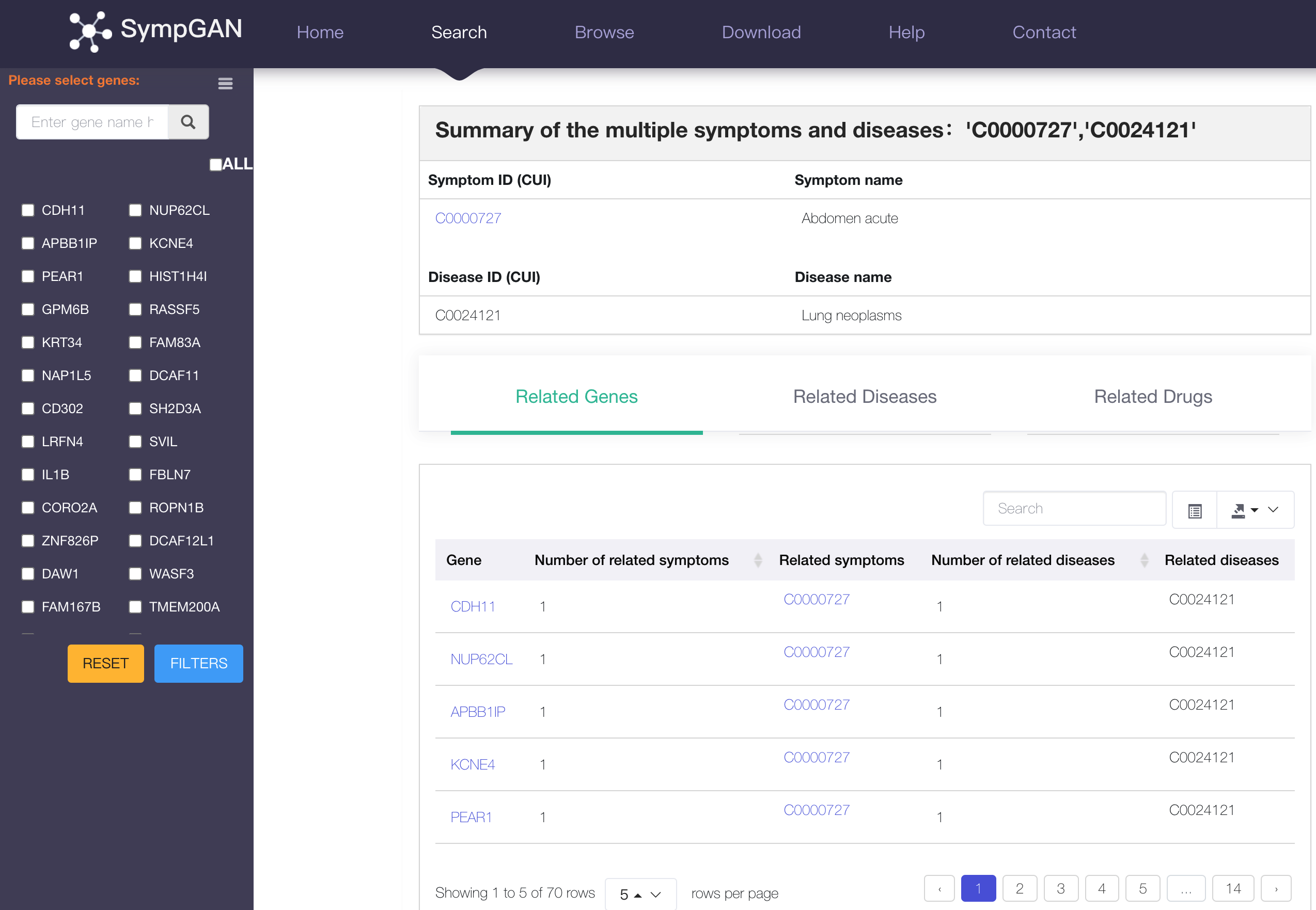
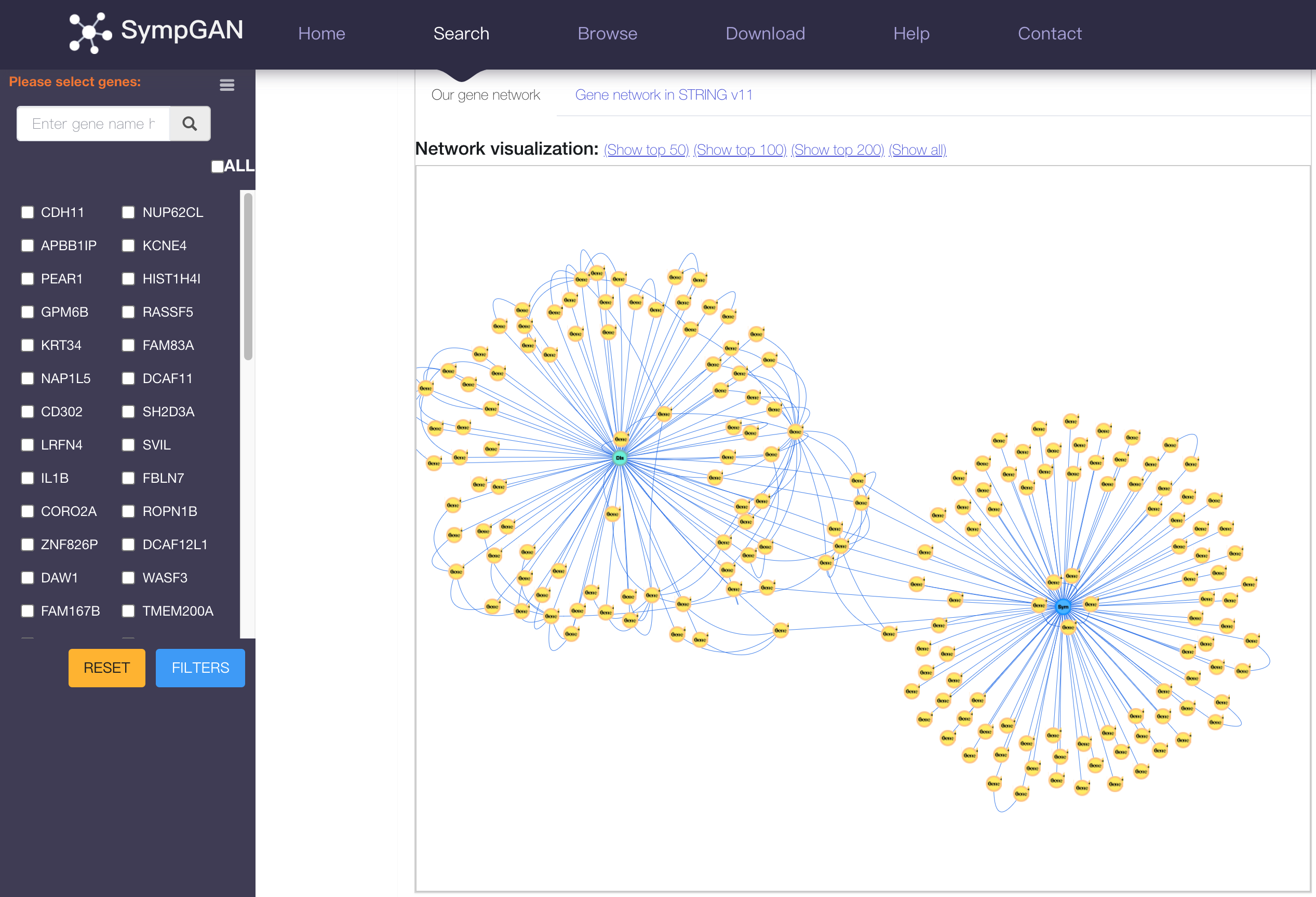
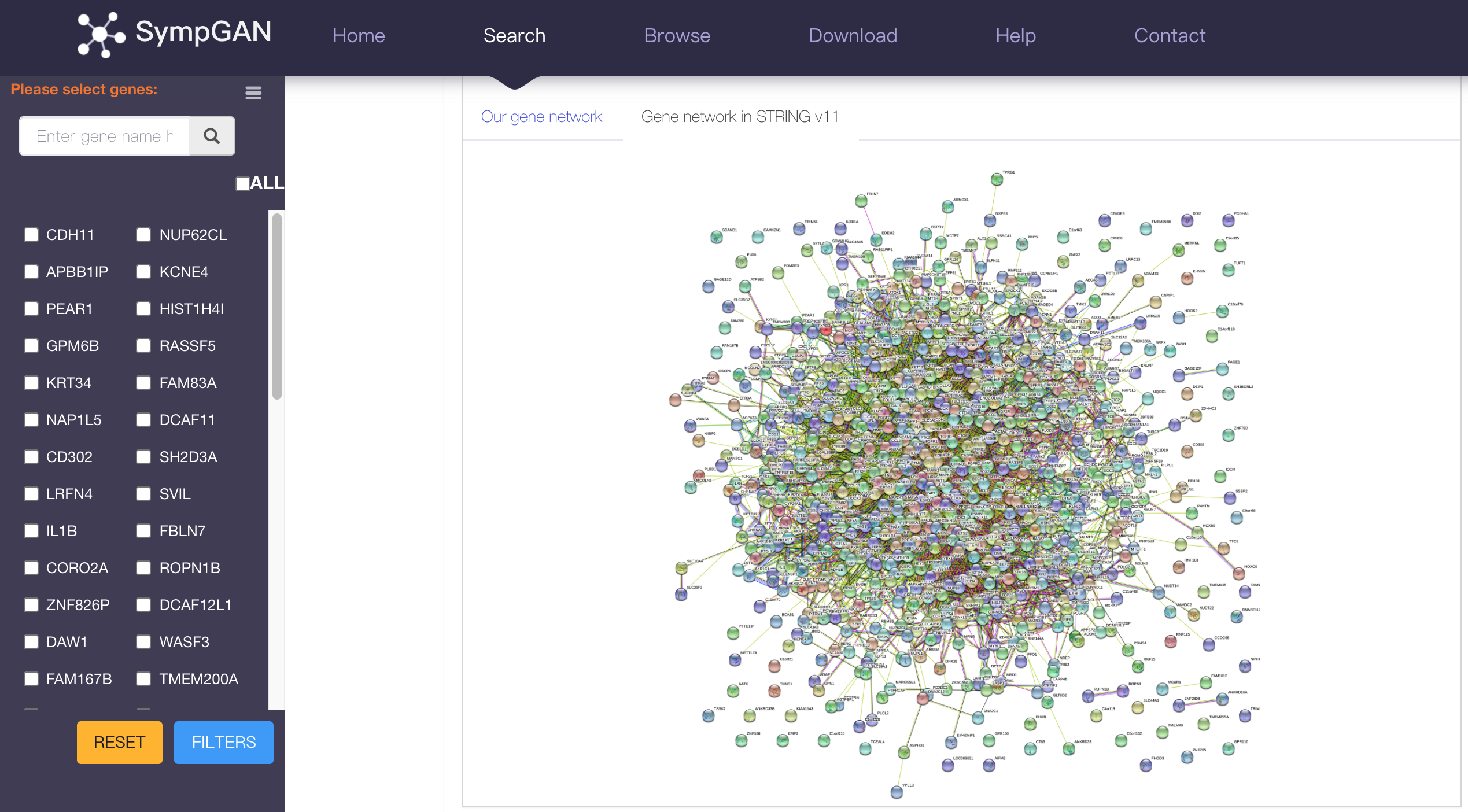
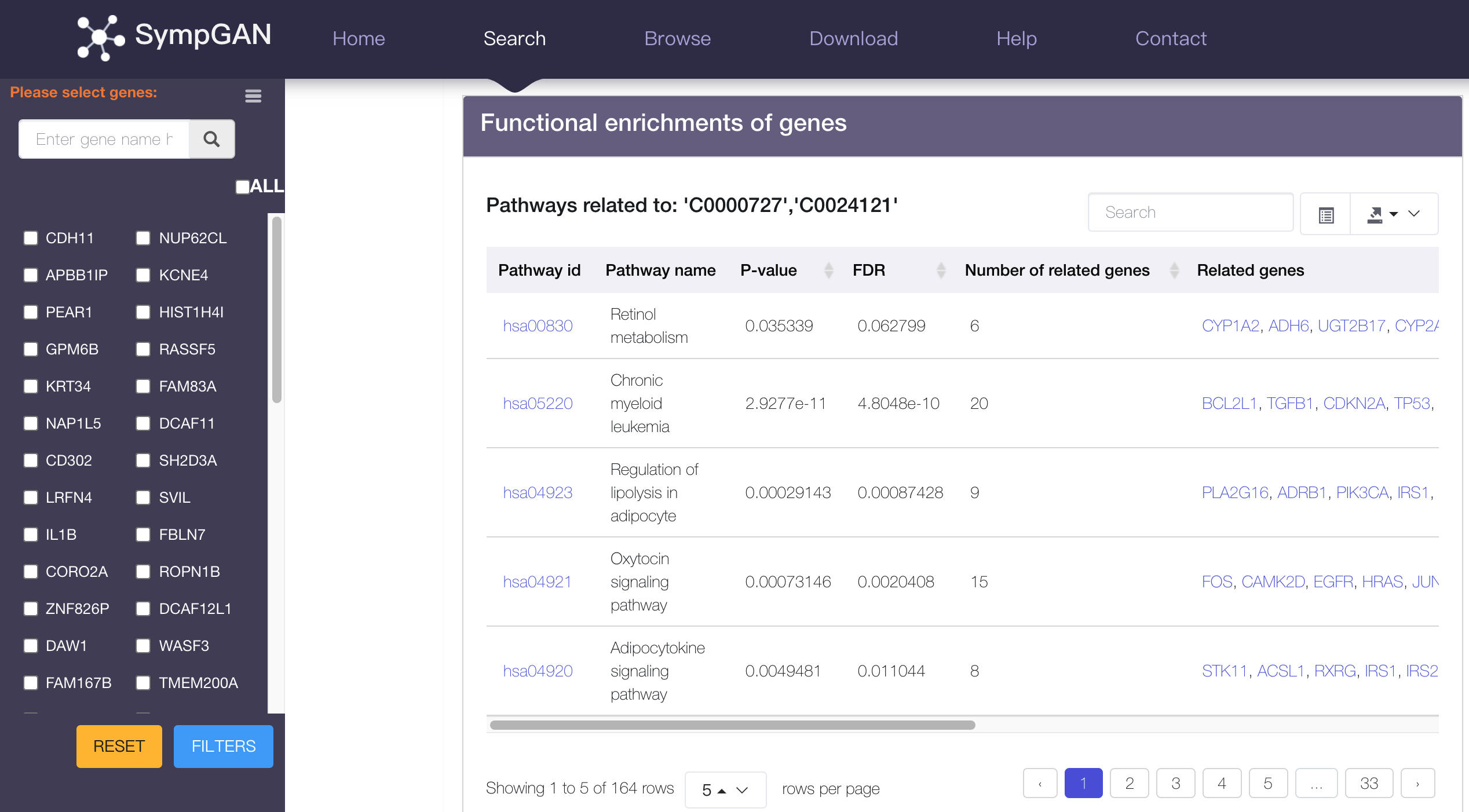
The forth search pattern allows users to input single disease (i.e., a disease name). The result page of search displays the related basic informatin, the related symptoms, and the related genes of the disease.
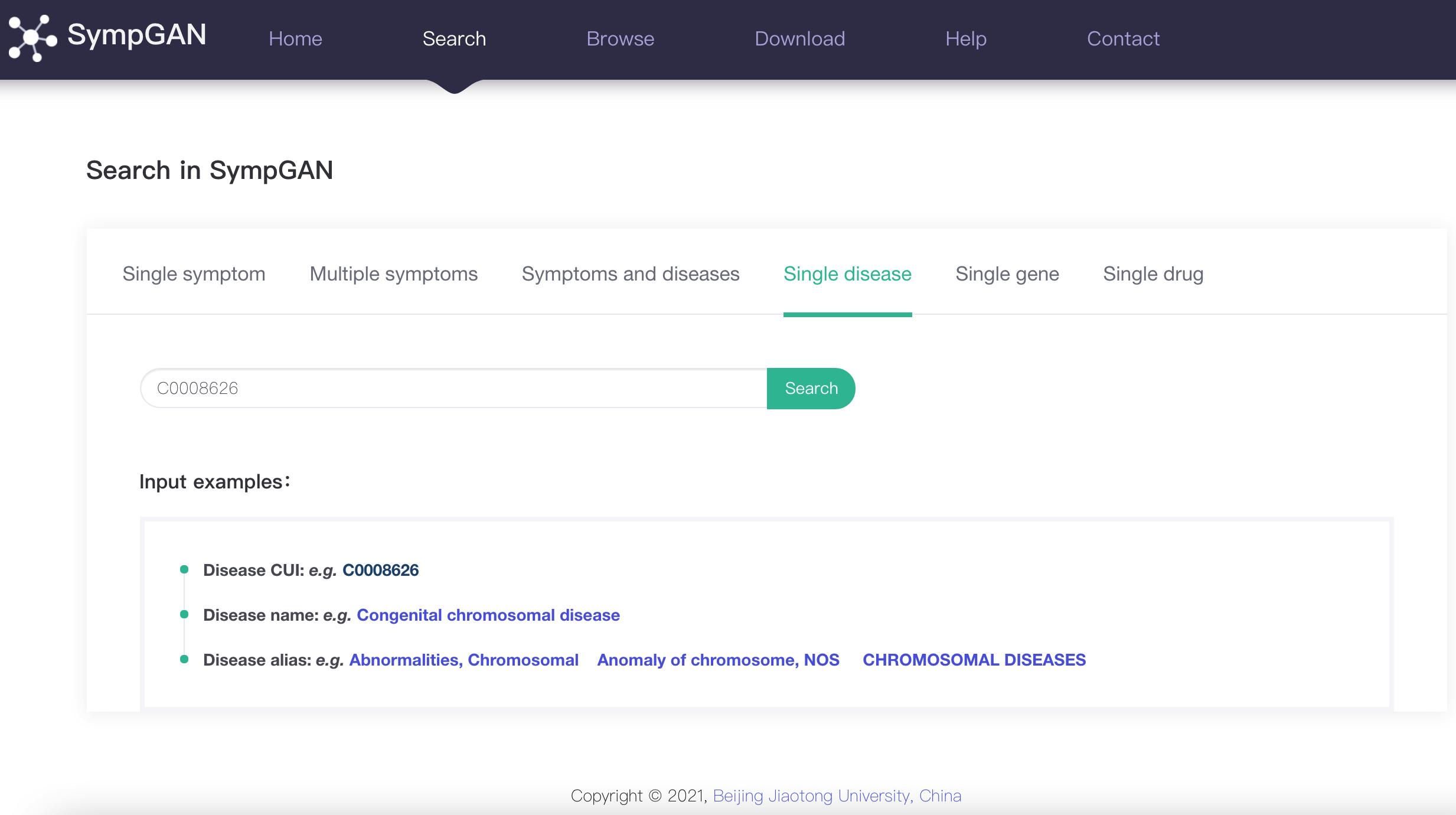
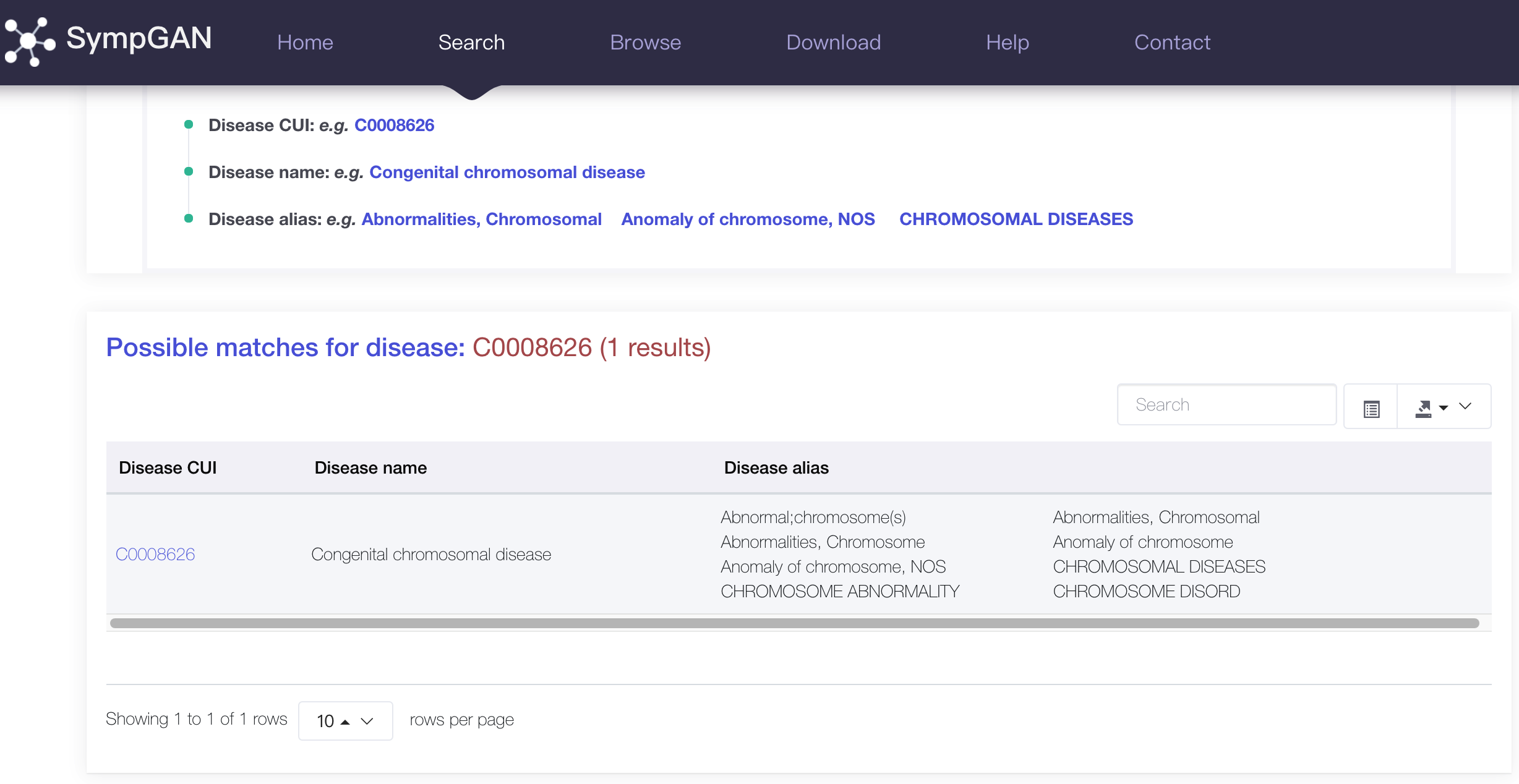
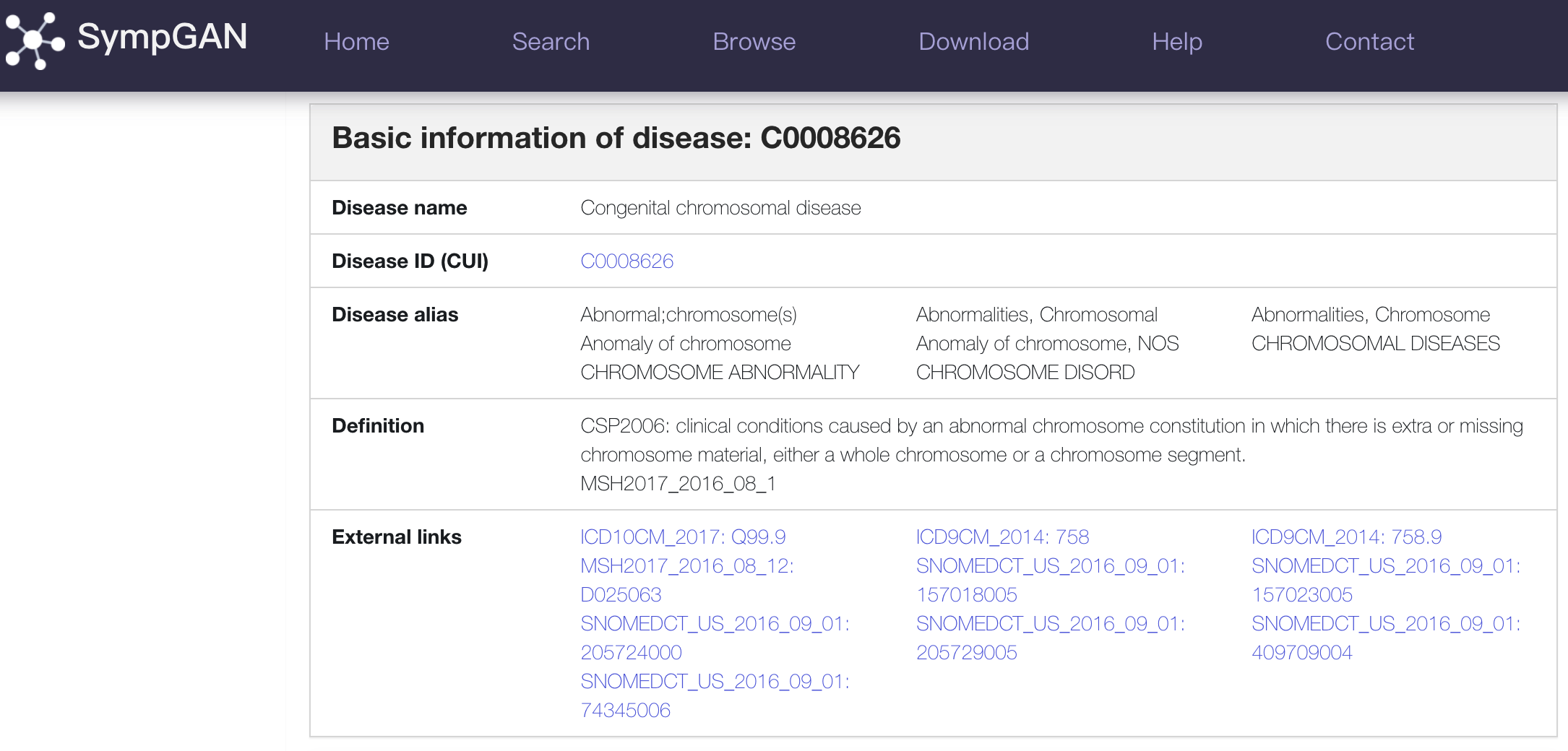
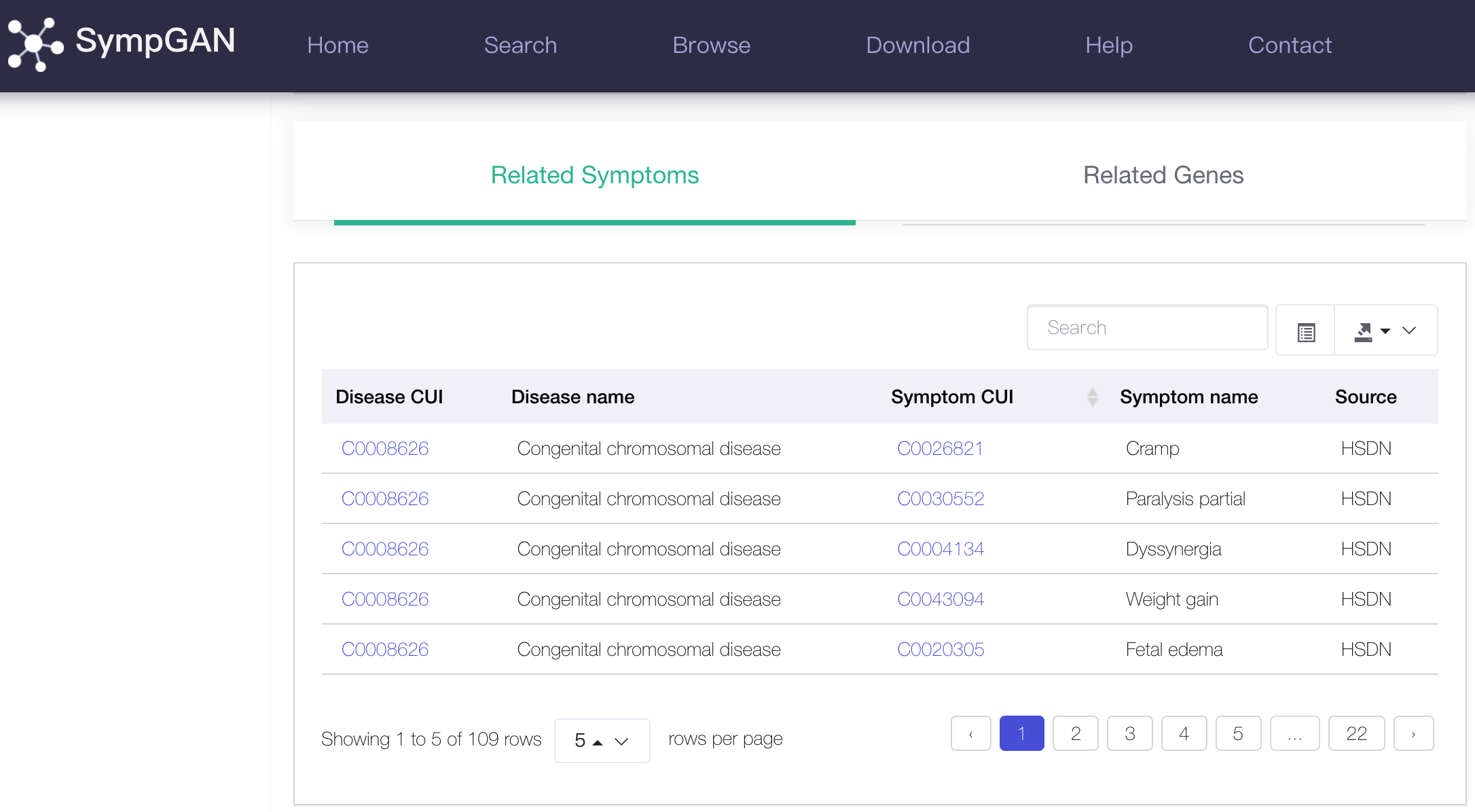
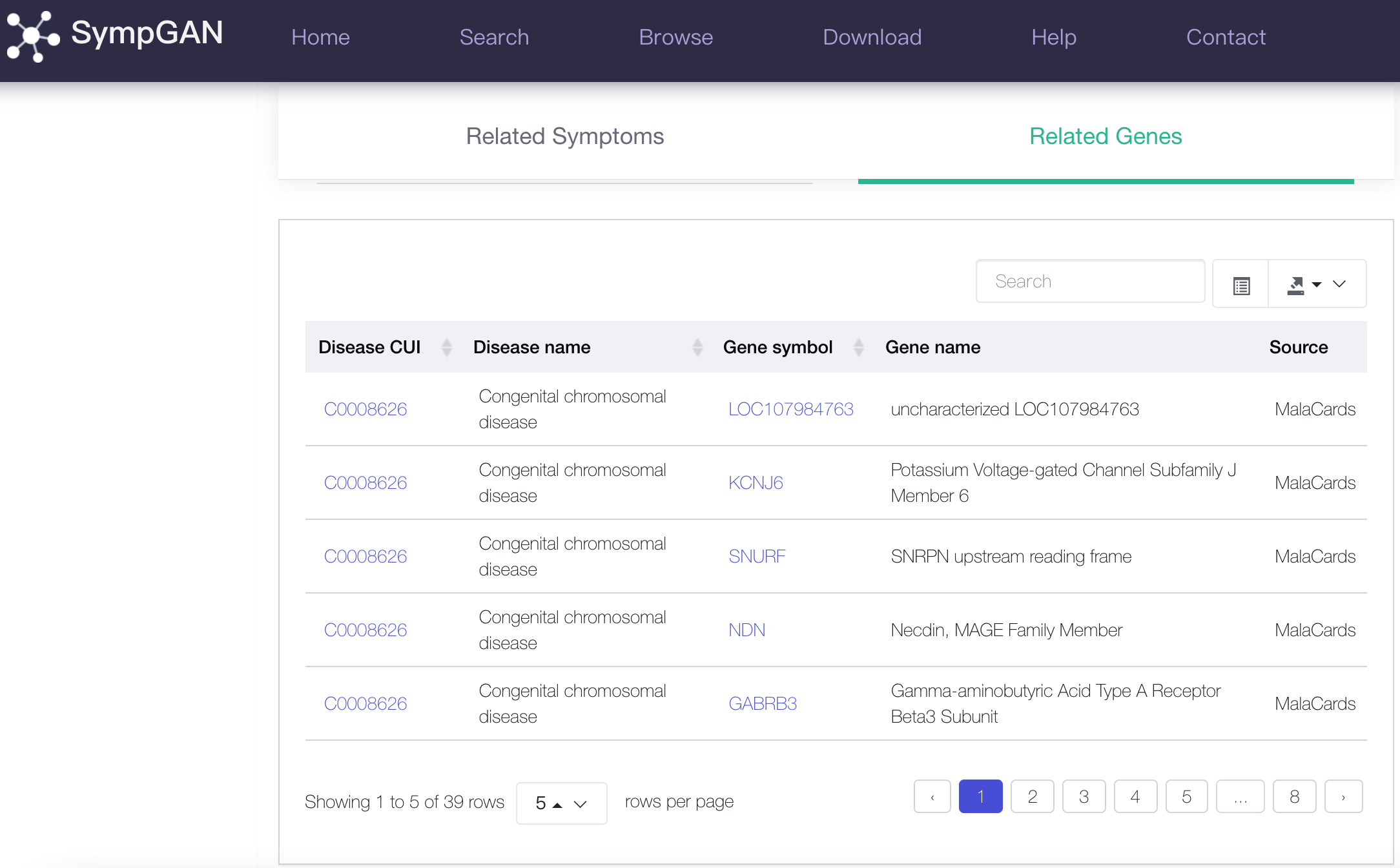
The fifth search pattern allows users to input single gene (i.e., a gene symbol). The result page of search displays the related basic informatin, the related symptoms, the related diseases, and the related drugs of the gene.
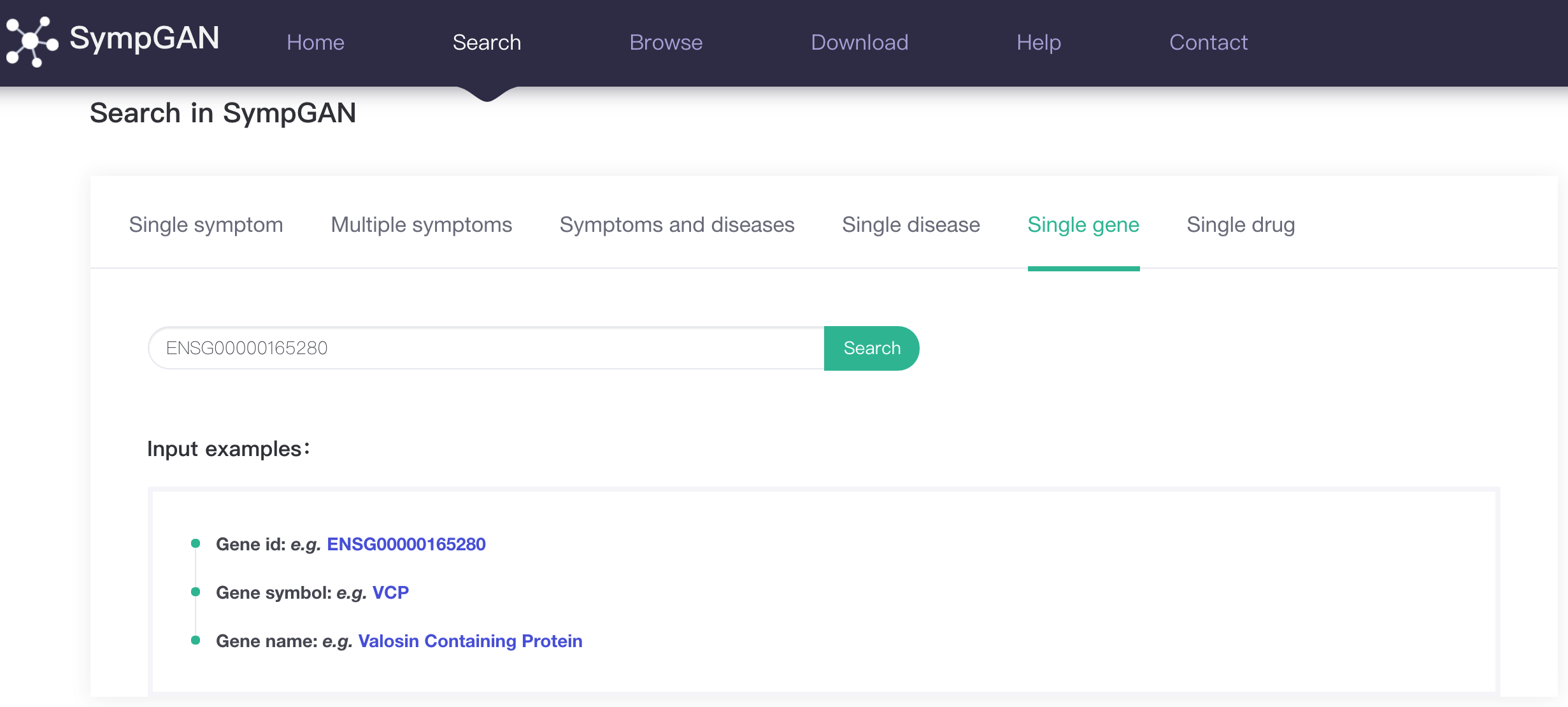

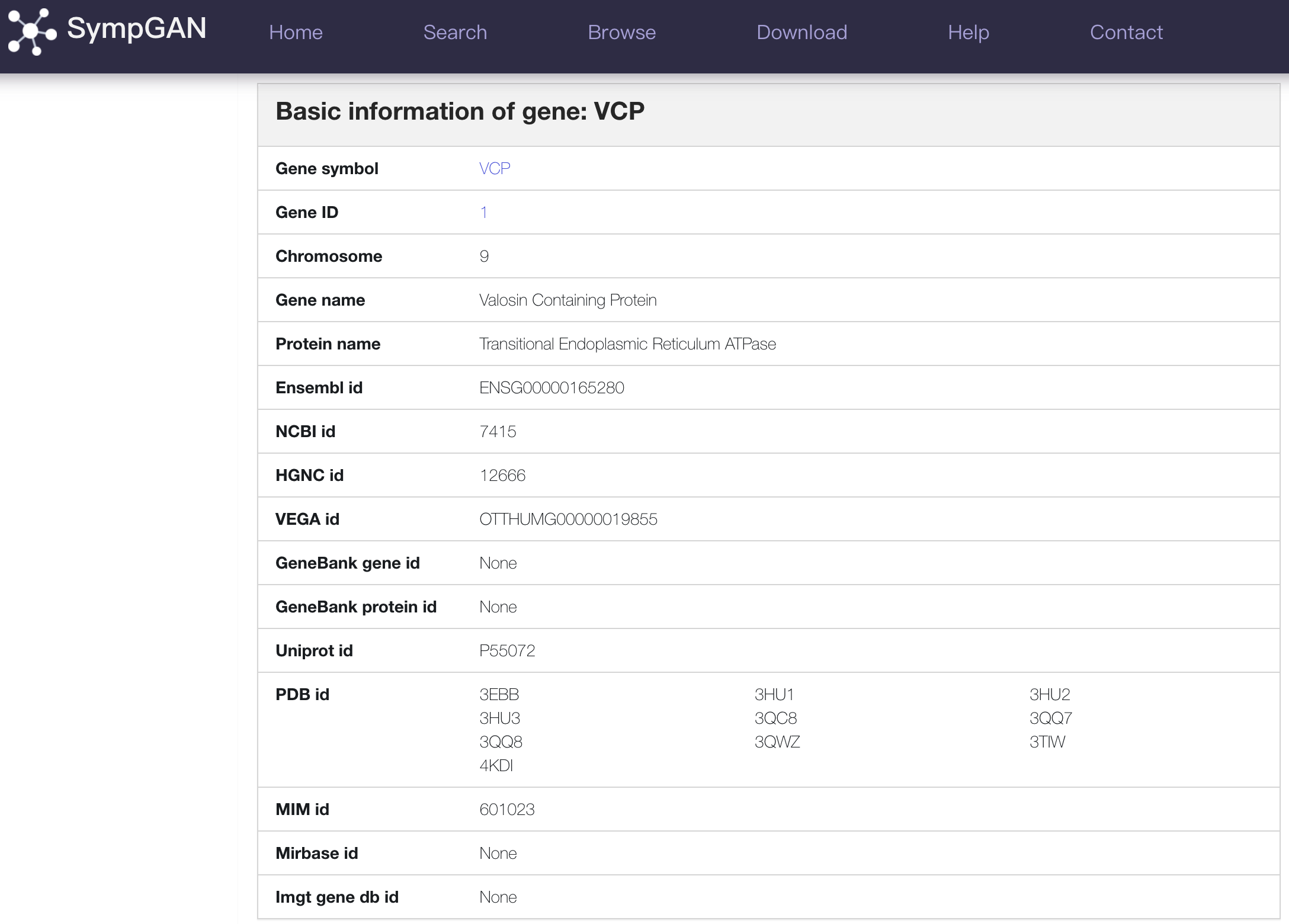
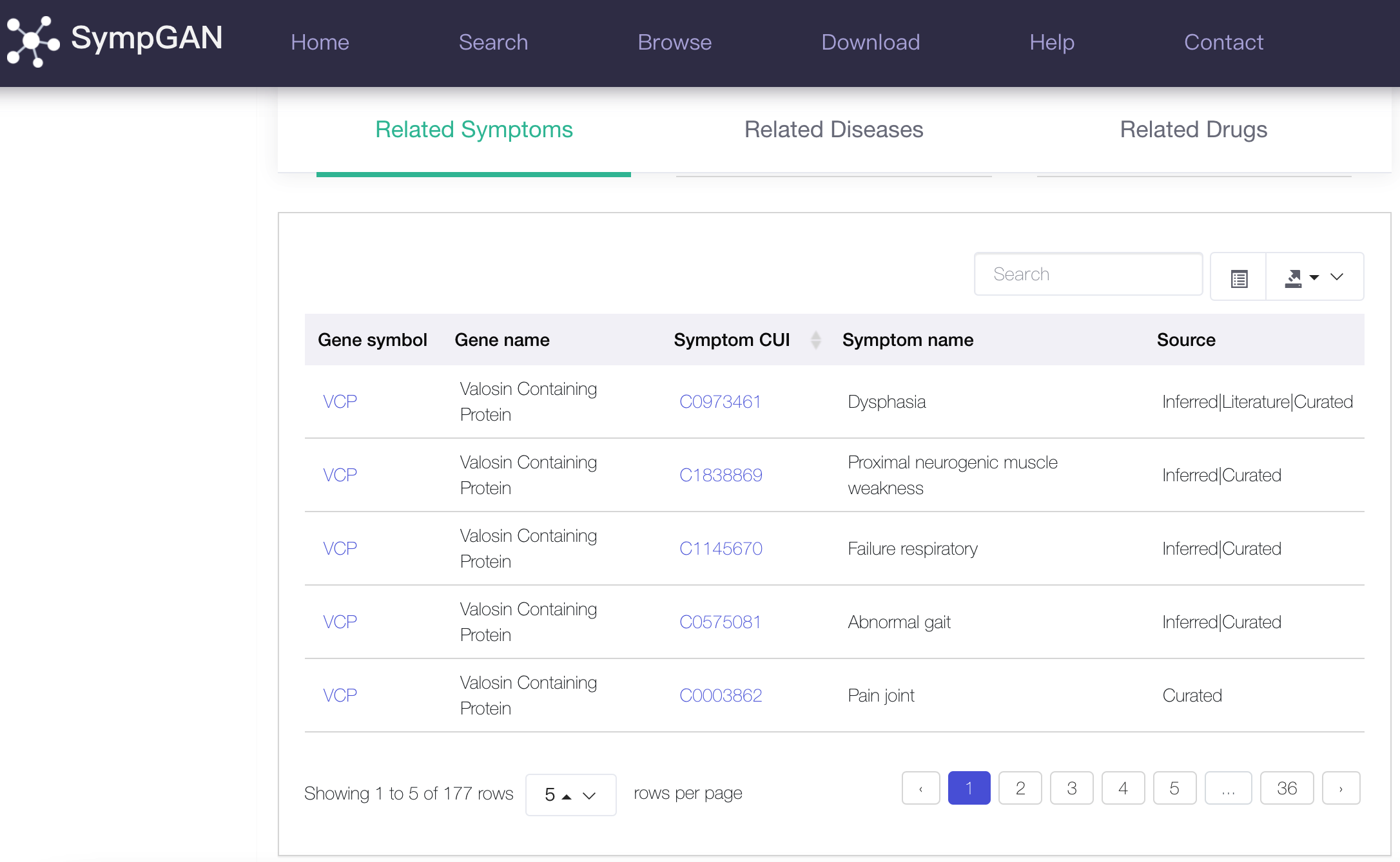
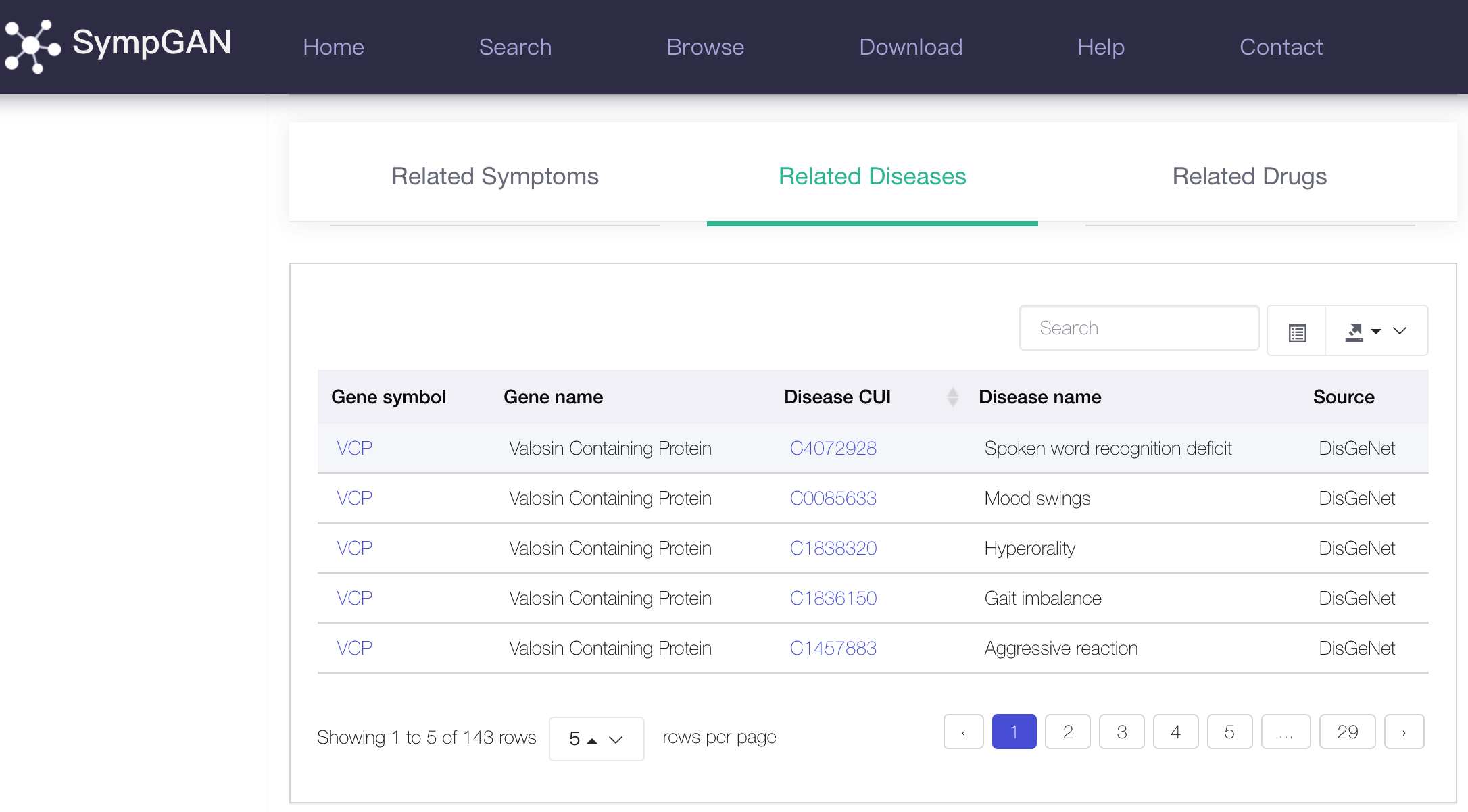
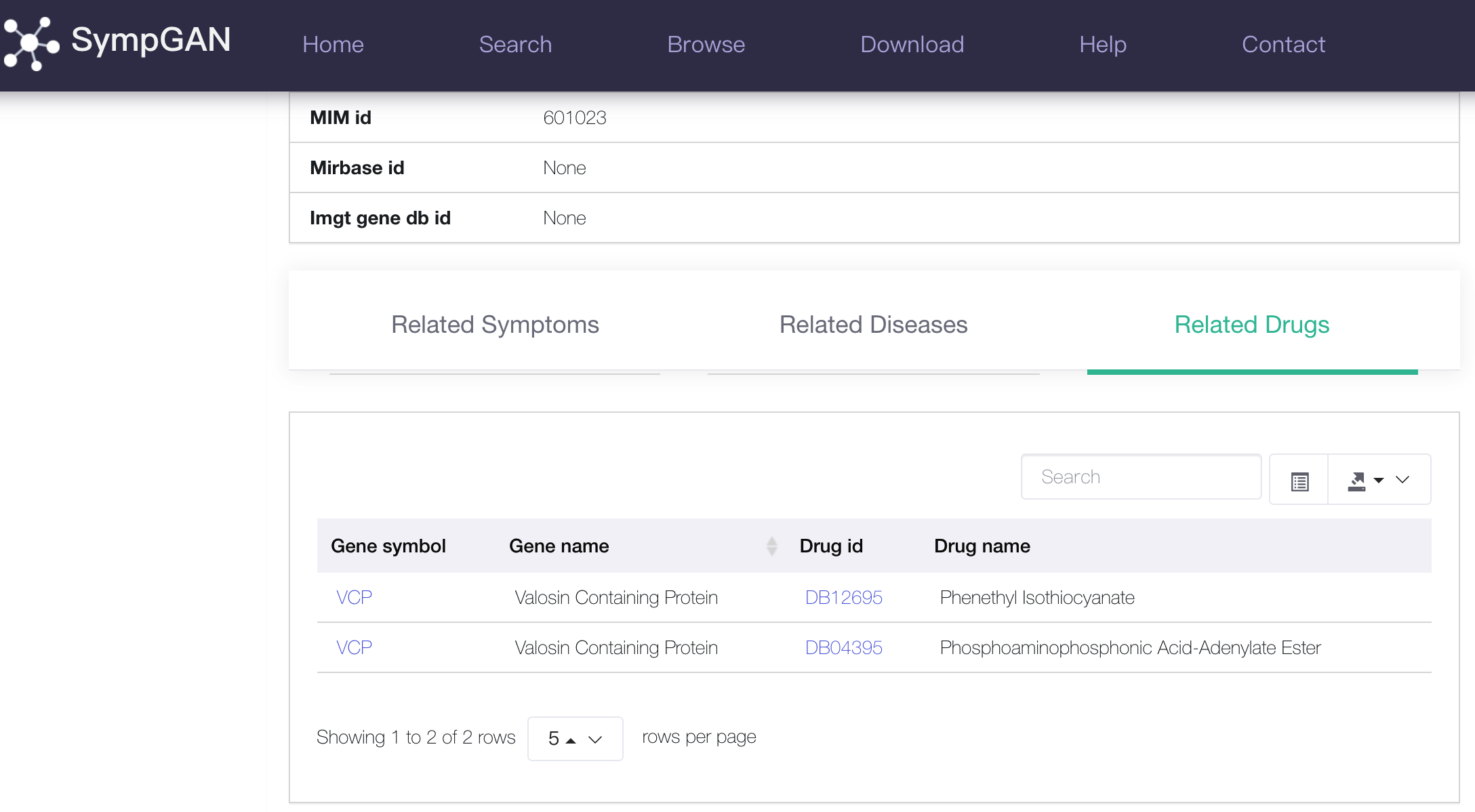
The sixth search pattern allows users to input single drug (i.e., a drug name). The result page of search displays the related basic informatin, the related symptoms, and the related genes of the drug.
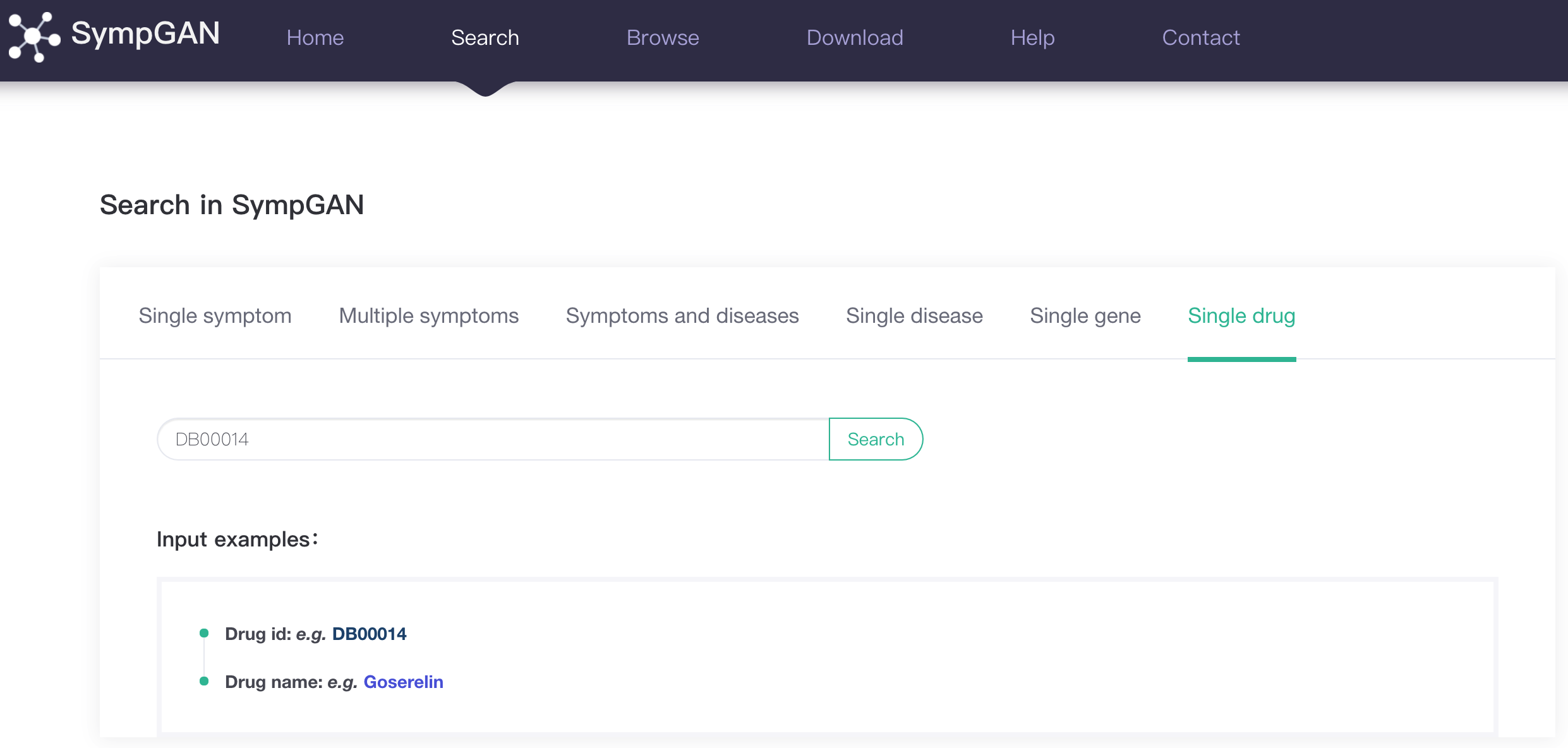
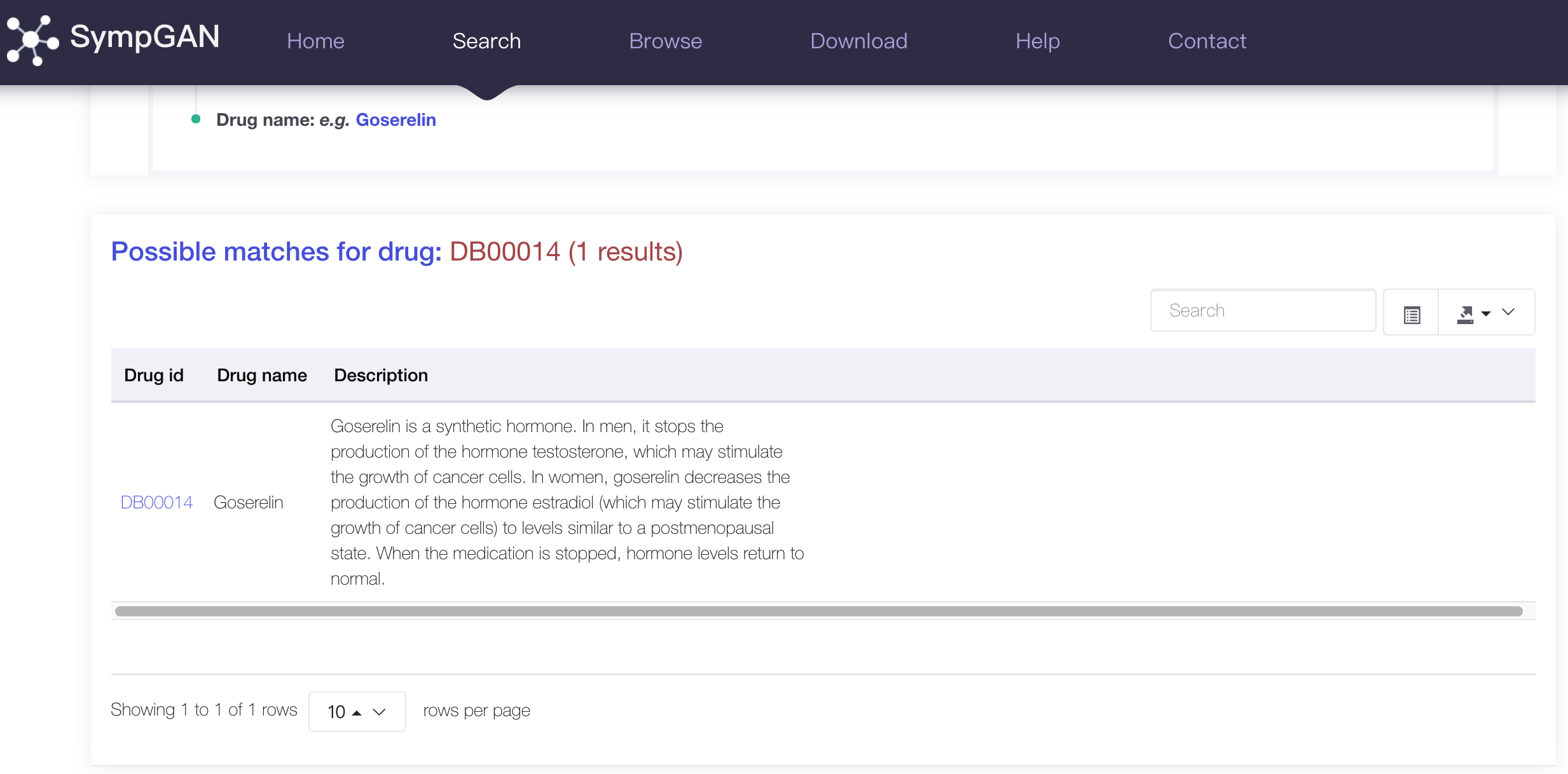
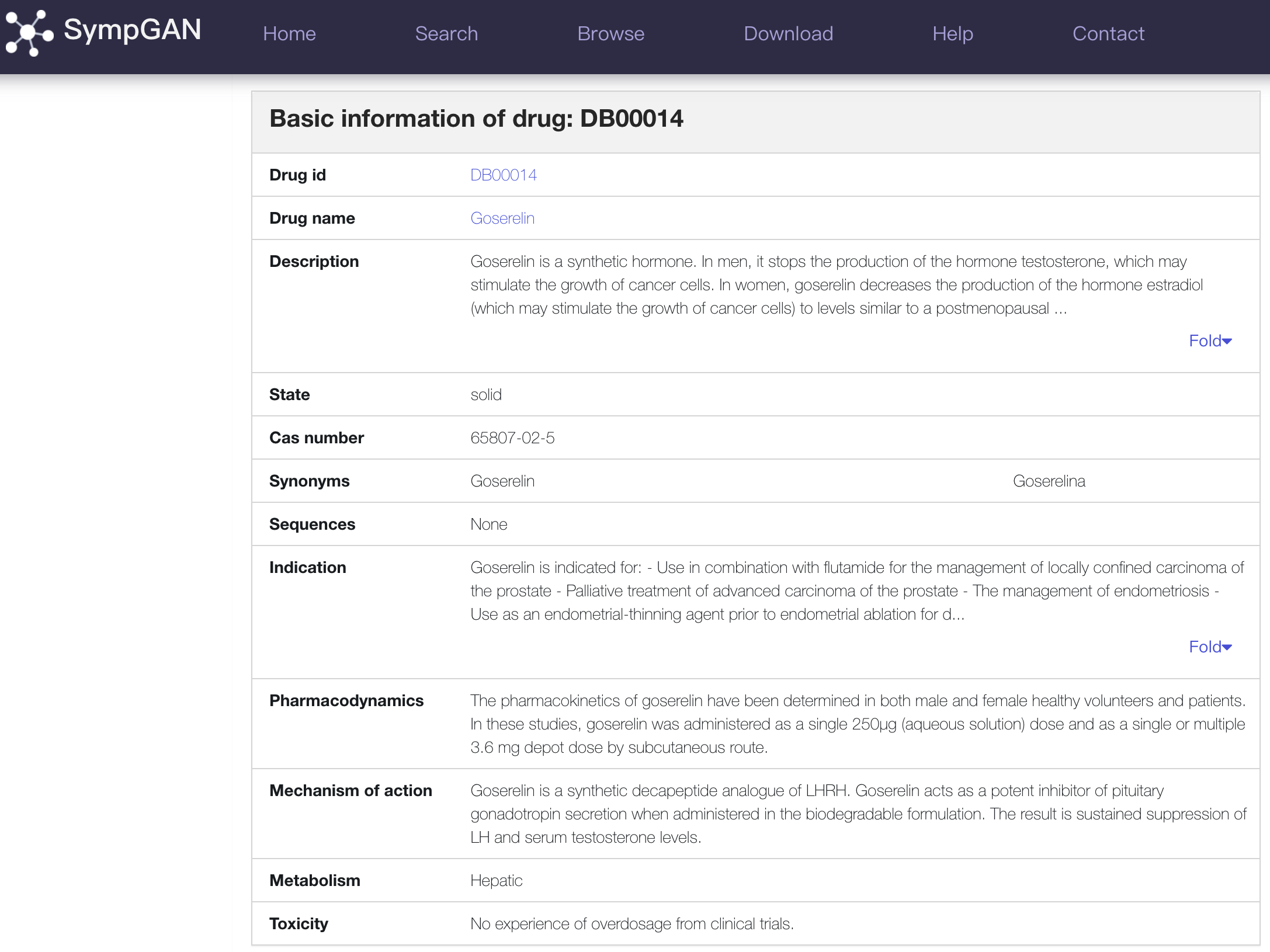
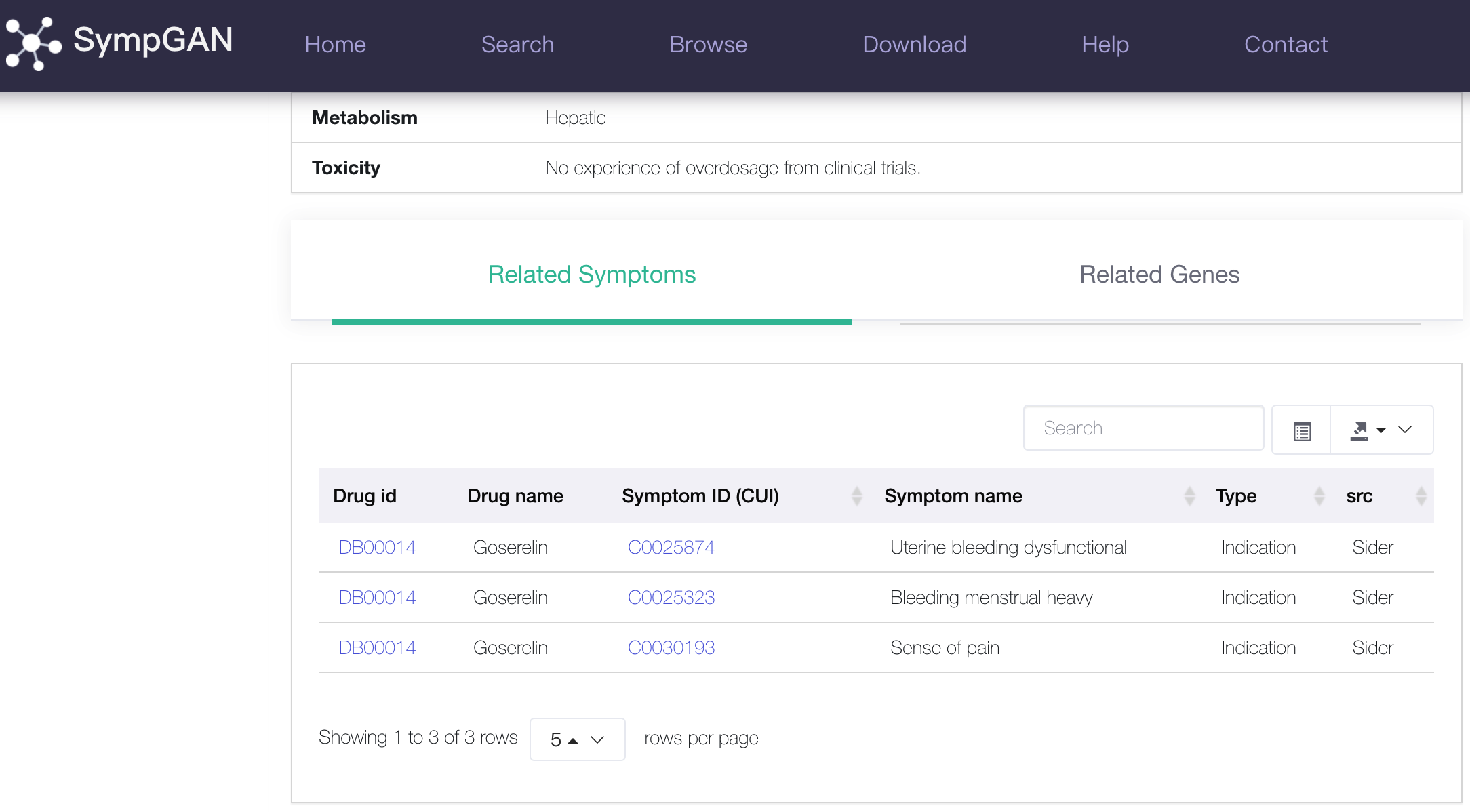
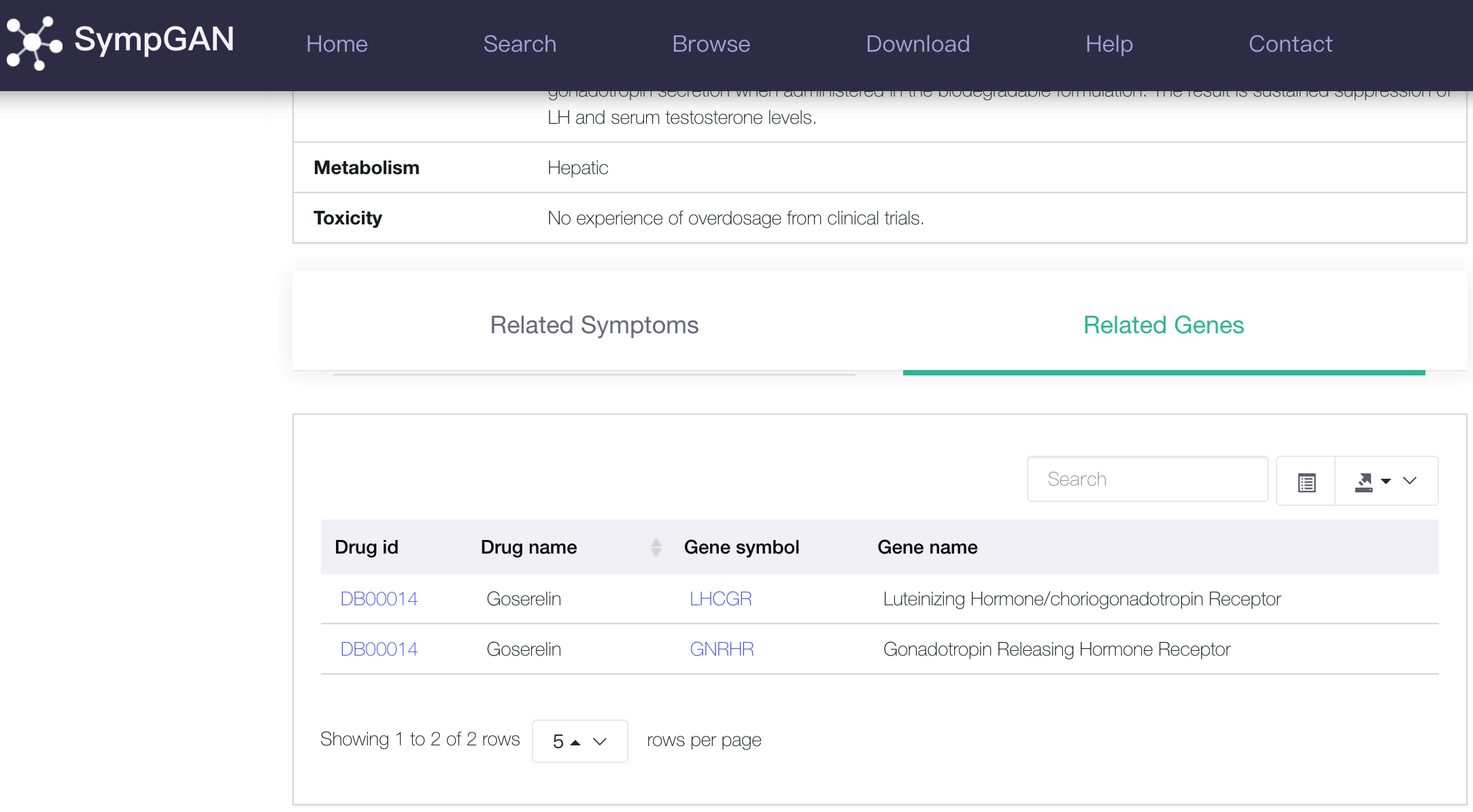
3. Download data
All the terminologies of symptoms and diseases and the associations (symptom-gene, symptom-disease and symptom-drug associations) are free to download.

4. Contact information
If you have any further questions, please contact us by the following information.

